

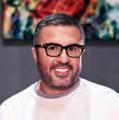
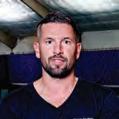

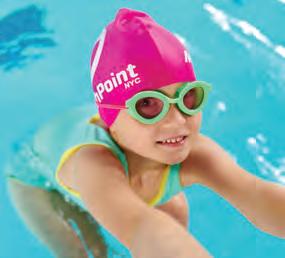

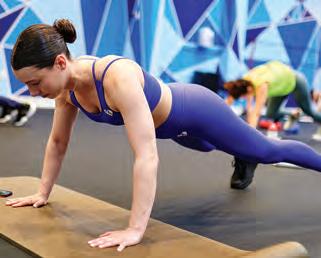
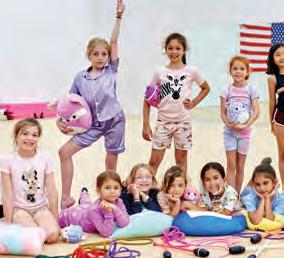
NYTennisMag.com New York Tennis Magazine

Distribution scheduled for 05/01/24 This edition will feature: • Tennis in the Hamptons • Boys’ High School Tennis Update • 2024 French Open Preview • New York Tennis Magazine’s Tennis and Pickleball Summer Series Print distribution across New York at 300+ locations. Digital distribution across website and social media pages, and the e-Edition will be e-mailed out to our full data base. Don’t miss the advertising opportunities in the next edition of New York Tennis Magazine May/June 2024! Facebook-www.Facebook.com/NewYorkTennis Instagram-@NYTennisMag • Twitter-@NYTennisMag Submissions for both advertising and editorial are due by April 1, 2024 For more information, please call 516-409-4444 or e-mail Advertise@NYTennisMag.com COMING IN MAY
1228 Wantagh Avenue, Suite 203 Wantagh, NY 11793-2202
Phone: (516) 409-4444 • Fax: (516) 409-4600
Web site: www.nytennismag.com
Staff
David Sickmen Publisher (516) 409-4444, ext. 309 david@usptennis.com
Brian Coleman
Senior Editor
(516) 409-4444, ext. 326 brianc@usptennis.com
Joey Arendt Art Director
Marie Santora-Lent Advertising Coordinator (516) 409-4444, ext. 301 Marie@usptennis.com
Emilie Katz Assistant Marketing Coordinator
Dr. Tom Ferraro
Contributing Writer
Rob Polishook
Contributing Writer
Steve Kaplan
Contributing Writer
Luke Jensen
Contributing Writer
Nadia Buffa
Remy Buffa
Aryn Feldman
Nyla Gershfeld
Eva Jalosky
Event Team
Abby Kleiman Brielle Marcus Victoria Wroblewskii Chloe Zigman
Advertising
To receive any information regarding advertising rates, deadlines, and requirements, call (516) 409-4444 or e-mail info@usptennis.com.
Article Submissions/Press Releases
To submit any material, including articles and press releases, please call (516) 409-4444 or e-mail info@usptennis.com. The deadline for submissions is the first of the month preceding the target issue.
Subscriptions
To receive subscription information, contact (516) 409-4444 or e-mail info@usptennis.com or check out our Web site: www.nytennismag.com. Fax subscription changes to (516) 409-1600.
Statements of fact and opinion in New York Tennis Magazine are the responsibility of the authors alone and do not imply an opinion on the part of United Sports Publications Ltd. New York Tennis Magazine reserves the right to edit, reject and/or postpone the publication of any articles, information or data.


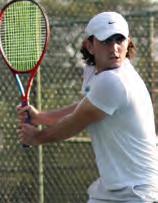
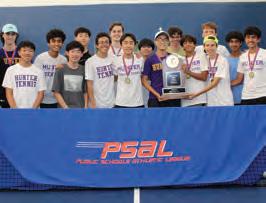
Highlights 8Beyond the Baseline: NYJTL’s Scholar Athletes Program Helping Students On and Off The Court By Brian Coleman 20Junior Player Spotlight: Cal Wider, Professional Children’s School By Brian Coleman 25Guide to Court Builders & Suppliers 282024 New York Tennis Magazine’s Guide to the Top Tennis Camps 442024 New York City Boys’ High School Preview Features 4Across Metro New York…News and Notes From Across the New York Metro Tennis Community 11The Importance of a Private Coach By Jay Pinho 12The One-Handed Back vs. Two-Hander: A Long Lost Battle for The Classic Shot By Gilad Bloom 18The Importance of Physical Preparation in Tennis By Daniel Deymonnaz Apud 19Unlocking Tennis Potential: Coaching and Development in Group and Social Tennis By Tony Huber 22USTA Eastern Metro Region Update 43Whole Human Athlete: The Secret to Being Your Best By Rob Polishook 46Five Essential Tips for Adult Tennis Fitness: A Guide to Injury Prevention and Lifelong Playing By Diego Largacha 48The Zone and How to Get There By Dr. Tom Ferraro 50What Tennis Players and Coaches Can Learn From Other Sports By Steve Kaplan 51Metro Corporate League Recap presented by Advantage Tennis Clubs 52Prodigy Making: 15 Principles to Improve Junior Tennis Technique and Development By Chris Lewit 54How To Avoid Negative Self-Talk By Yesica De Lucas 55The Jensen Zone: My Advice for USTA League Players By Luke Jensen 56Court Six: New York Tennis Magazine’s Gossip Column By Emilie Katz Table Of Contents Forza Jannik Italy’s Jannik Sinner wins first major title and is ready for more See page 15 New York Tennis Magazine is published bi-monthly by United Sports Publications Ltd. • Copyright © 2024 United Sports Publications Ltd. Photo credit: Aaron Francis/Tennis Australia
New York Tennis Magazine
March/April 2024 • Volume 14, Number 2
8
20
44
PG
PG
PG



















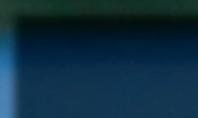






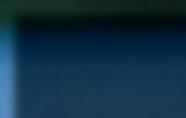


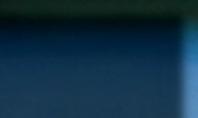









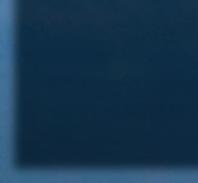



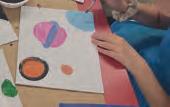






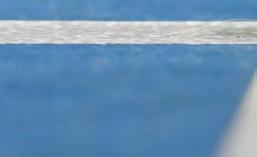




















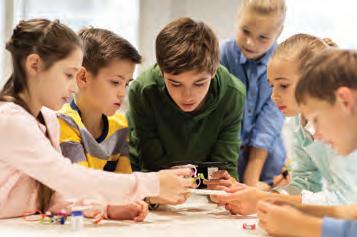
















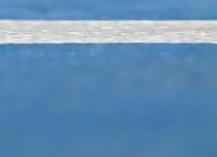

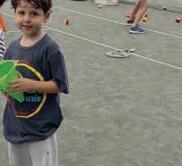
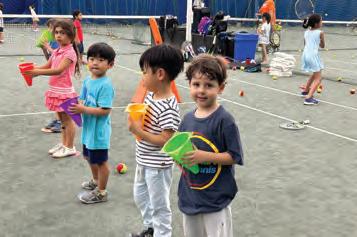
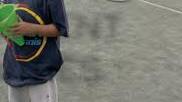



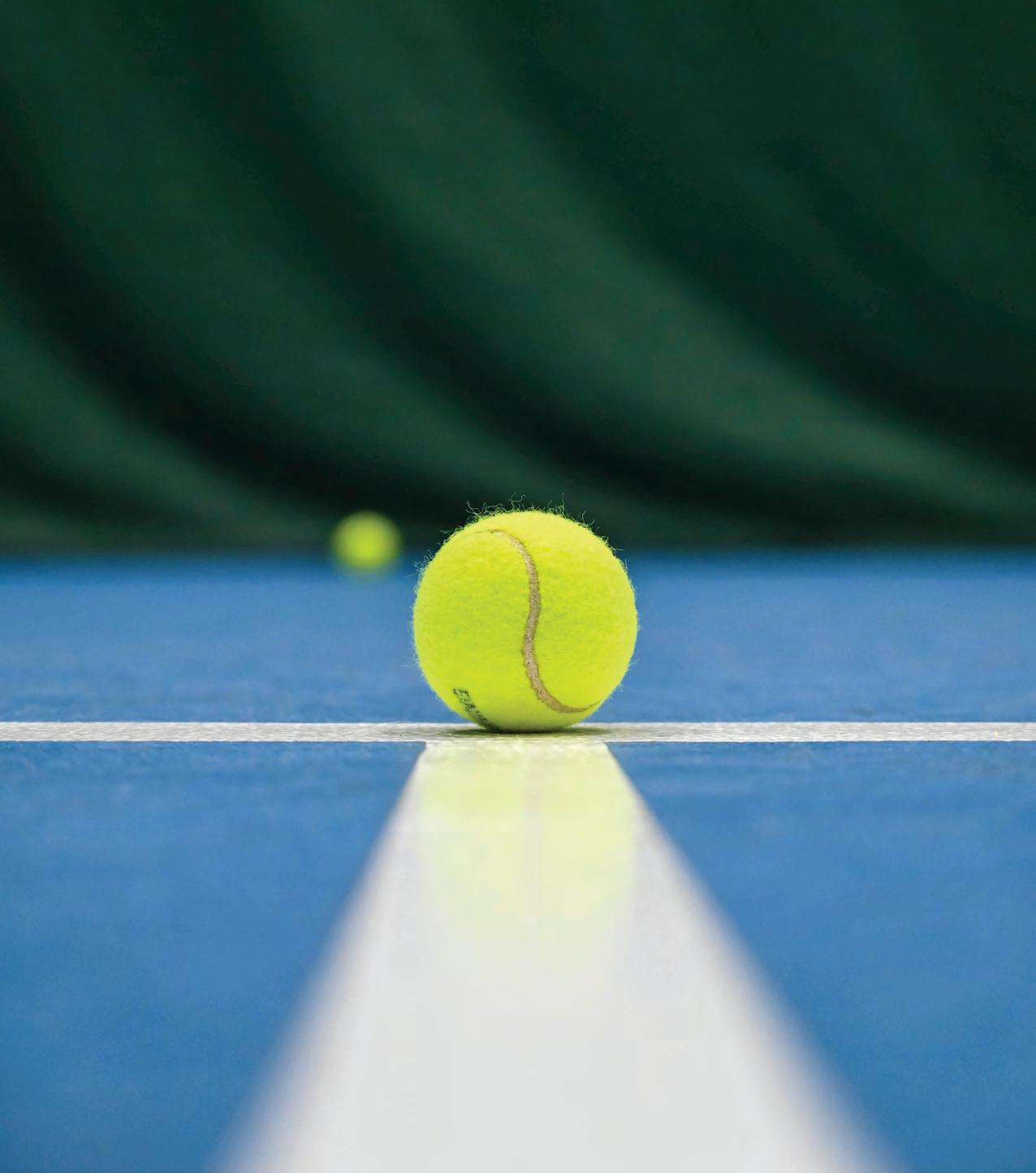
3 NYTennisMag.com • March/April 2024 • New York Tennis Magazine e Y Wher Advan Perfe our Kids Shine o tage Camps: n s ge or All A t f c Y LUNCH INCL e! LUDED! TENNIS CHE S ES & C AR CR ... S OTIC AND MORE . ROB V E! ENRICHHMENT Book before Mar Ad ch 31st for e ttagecamps.nevan t Camp A xclusive prricing.
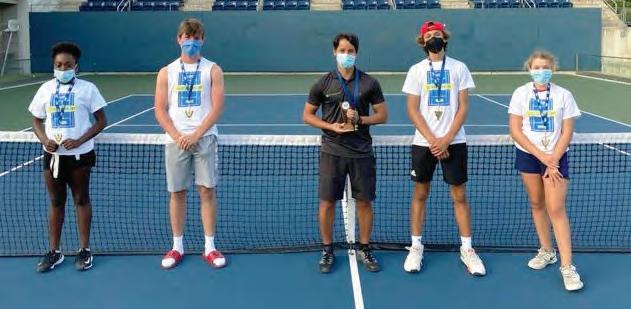
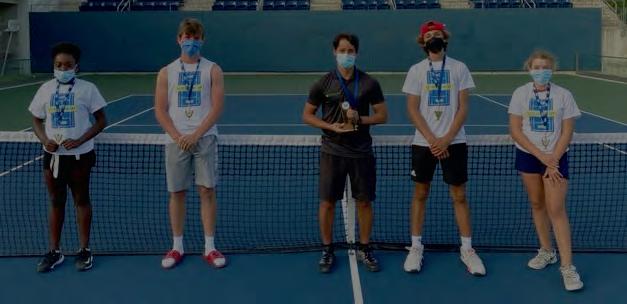


Hoo Takes Home J30 Singles Title
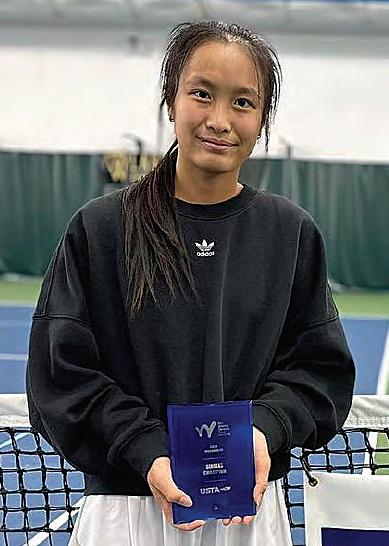
Carrie-Anne Hoo won the J30 ITF event in Eau Claire, Wisconsin as she captured the Girls Singles title. Hoo, who trains at the USTA Billie Jean King National Tennis Center, won three different three-set matches to earn the championship, including a 3-6, 6-2, 7-6(0) victory in the final. Hoo also reached the semifinals of the event’s doubles draw alongside Maine’s Olivia Cutone.

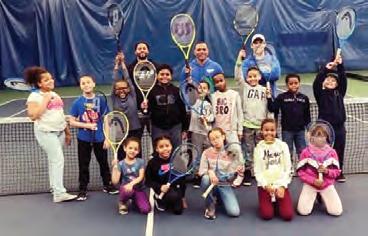
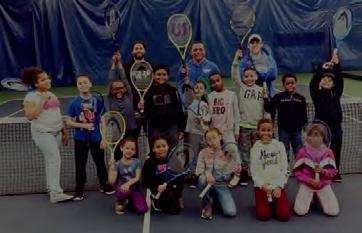
Papadopoulos Off to A Great Start In 2024
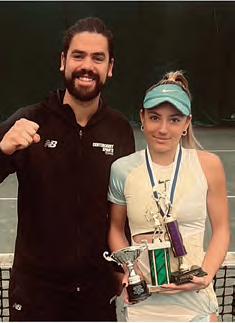
Papadopolous won the title with a 6-4, 4-6, 6-3 victory in the championship match.
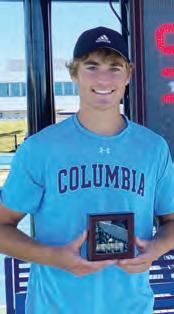



Across Metro N
Across Metro N

Centercourt Tennis Academy full-time player Kalista Papadopolous has been busy and has had a great start to her 2024 season, reaching the finals of an L3 event, finishing as consolation runner-up in an L2, reaching the doubles final at an L3 Mixed Doubles tournament, and capturing the title at the L4 Open event in Madison, Conn. in the Girls 16s singles division.
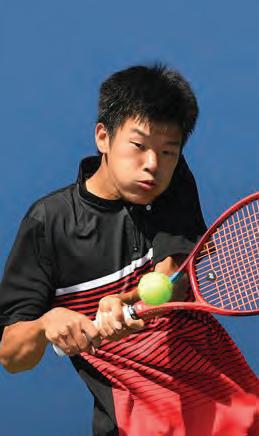



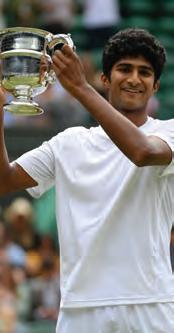







TENNIS A FUL L CENTE R AccademicP OwnChoic • er m y ent / Plaar g P On Goin • omp g & C rainin e CTomplet • g with On S rainin y Tull Da F • g Staff hin cao ld Class C Woor • W eofA ADEM Y C TIME T OUR C ogramssupported eeded gs as n eetin g ent plannin veelopm etition De ers hcae e Qualified T it acilities d F an v yg est Pla Twnoughed Reno • Avvaailable C wit om NY r Only 25 Miles f • veents ITF e ernationa d Int estic an Dom • sis ideo Analy ed V Specializ • Tooug g E C • e location in on c e, C ompetitiv g, Cainin • demic P Own Ch e of A dge Mental T v Av theast e Nor d in th roun ransport d T g an h Housin ,A TA or US ams f e el t ve l T y h Pla c vised Mat & Super r ess Phn demic Needs ca g & A hin ted ams suppor ogr v T Cha J Wim BAN Champion tour d C Har National 2021Winter OTZEN NICK K SA ZHENG MICHAEL 2021 ampion Junior mbledon JEE J AMIR NER Conta conra www. T ct Conrad Singh d@centercourtclub.com centercourtCTA A .com • +1 862-308-3029 LAN MENT P OPVELDE COMPETITIVEAND OUR US F ACTCONT OR Y D 4 New York Tennis Magazine • March/April 2024 • NYTennisMag.com
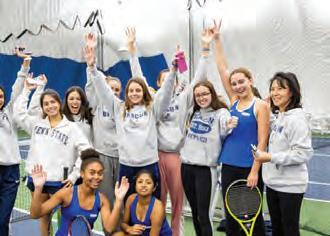
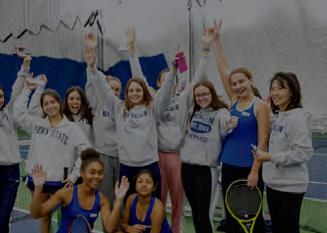

New York
New York
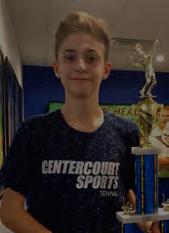
Brown Wins L6 Event

CourtSense’s Wolf Takes Girls 14s Championship
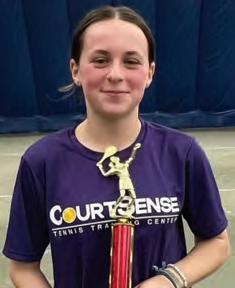

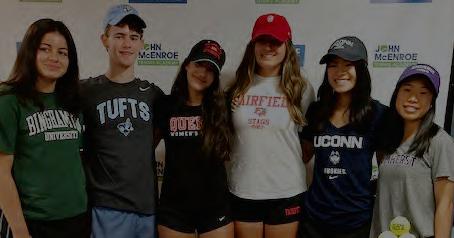
Genesis Brown captured the title in the Girls 16s division of the L6 Pinewoods event. Brown, who trains at MatchPoint NYC in Brooklyn, won all of her matches in straight sets en route to winning the championship, including a 6-2, 7-5 win in the final.
Maya Wolf, who trains at CourtSense Tennis Training Center, won the title at the L6 Clay Courts tournament at New York Tennis Club. Wolf was the winner of the Girls 14s singles division as she won all of her matches in straight sets.
Cary Leeds Center Welcomes Washington Tennis & Education Foundation
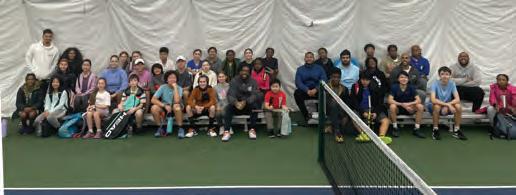
New York Junior Tennis & Learning welcomed in the students from the Washington Tennis & Education Foundation, for a day of tennis and life skills discussions with the NYJTL’s Scholar Athlete Program. The two groups
… News and notes from across the N.Y. Metro tennis community
… News and notes from across the N.Y. Metro tennis community


played tennis together while also discussing the importance of education, and are excited for the reciprocal trip to visit Washington later this year.
Ahmad Wins Les Petits As Doubles Title

Zizou Ahmad, who is in John McEnroe Tennis Academy’s BNP Mac 1 Paribas program, traveled to France for the prestigious Les Petits As event. Ahmad brought back with him the Boys 14s doubles title, as he paired with Davidov Teodor of Colorado to win the championship.
CLTA’s Houlbert Wins First Ever Green Ball Title
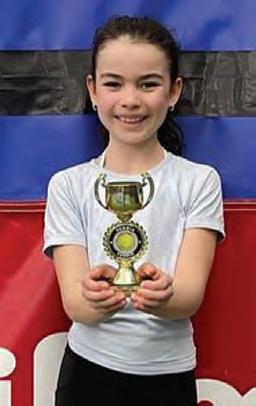
Sofia Houlbert was victorious at the Girls 10U event in Massachusetts. Houlbert trains with the Chris Lewit Tennis Academy and the title was her first ever one at the Green Ball level.
5 NYTennisMag.com • March/April 2024 • New York Tennis Magazine
across metro new york continued from page 00
Gilad Bloom’s Reyniak Wins L5 Clay Title
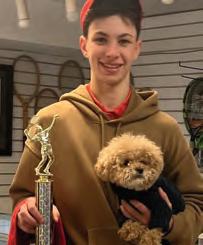
Matias Reyniak captured the title at the L5 Closed Clay Court Championships at The New York Tennis Club. Reyniak, a 14-year-old who trains with Gilad Bloom Tennis Academy, won the title in the Boys 16s singles division.
Teixeira, Pylla Take Home L4 Doubles Crown
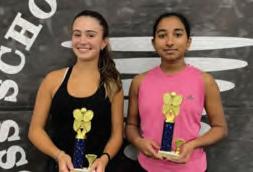
JMTA’s Bittner Wins in Hardscrabble
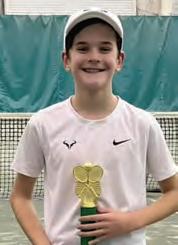
Cooper Bittner of the John McEnroe Tennis Academy took home the L6 Hardscrabble Club Challenger singles title, winning the event without dropping a set. Bittner’s win came in the Boys 14s division.
Hampton.
 Luma Teixeira (left) of the Ross School Tennis Center paired with Dhriti Reddy Pylla (right) to capture the title at the L4 Winter Championships in East
Teixeira and
Luma Teixeira (left) of the Ross School Tennis Center paired with Dhriti Reddy Pylla (right) to capture the title at the L4 Winter Championships in East
Teixeira and
6 New York Tennis Magazine • March/April 2024 • NYTennisMag.com
Pylla brought home the title in the Girls 14s doubles division.
Just Minutes from Manhattan Near Yankee Stadium
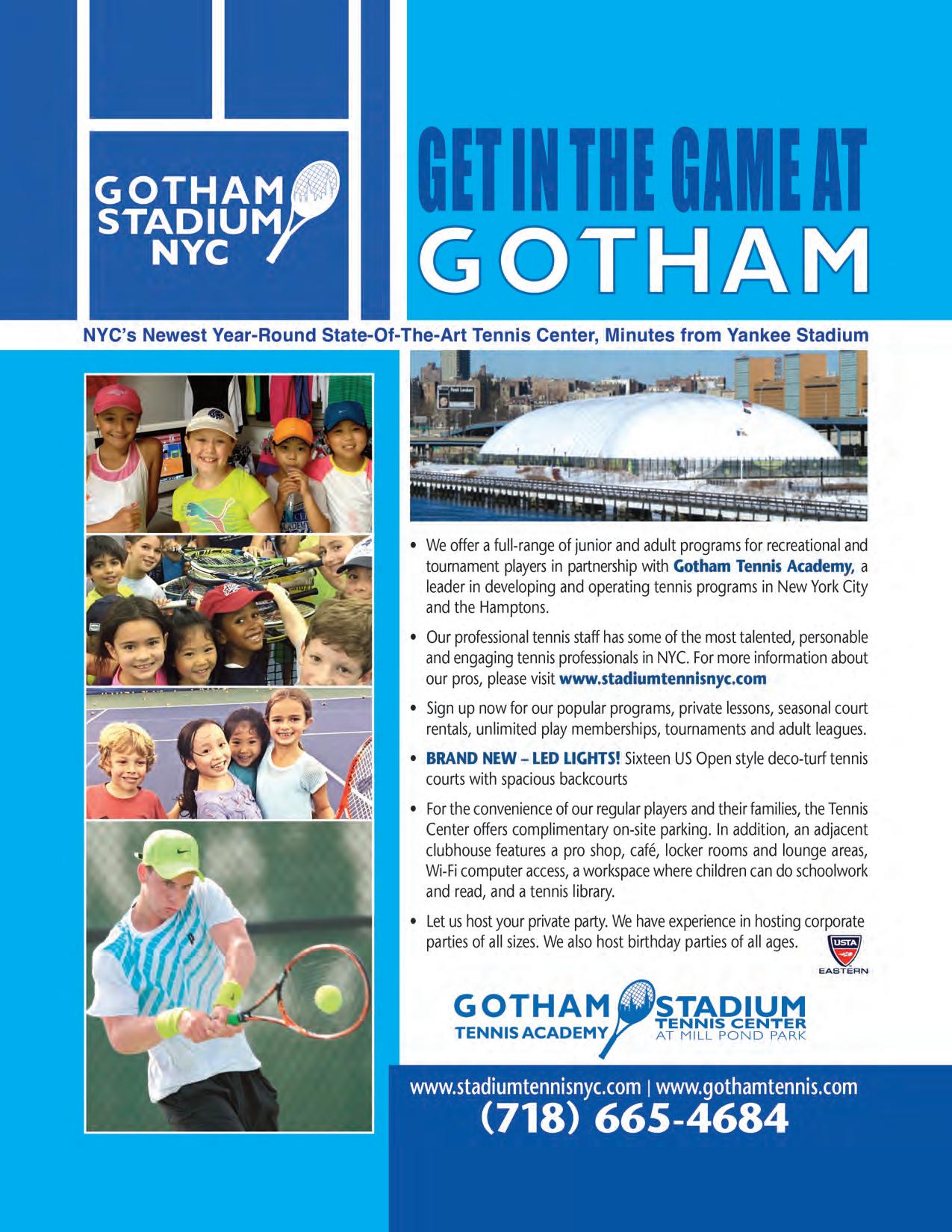
•We offer a full-range of junior and adult programs for recreational and tournament players in partnership with Gotham Tennis Academy, a leader in developing and operating tennis programs in New York City and the Hamptons.
•Our professional tennis staff has some of the most talented, personable and engaging tennis professionals in NYC. For more information about our pros, please visit www.stadiumtennisnyc.com
•Sign up now for our popular Junior Programs, Adult Clinics, Private Lessons, and Seasonal Courts.
•Sixteen US Open style deco turf tennis courts with spacious backcourts. Twelve courts are indoors from October through April.
•For the convenience of our regular players and their families, the Tennis Center offers complimentary on-site parking and Transportation referrals.
•An adjacent clubhouse features a pro shop, light snacks and beverages, complimentary Wi-Fi, and workspaces for schoolwork.
•Please see our Safe Play Procedures summarized at www.stadiumtennisnyc.com
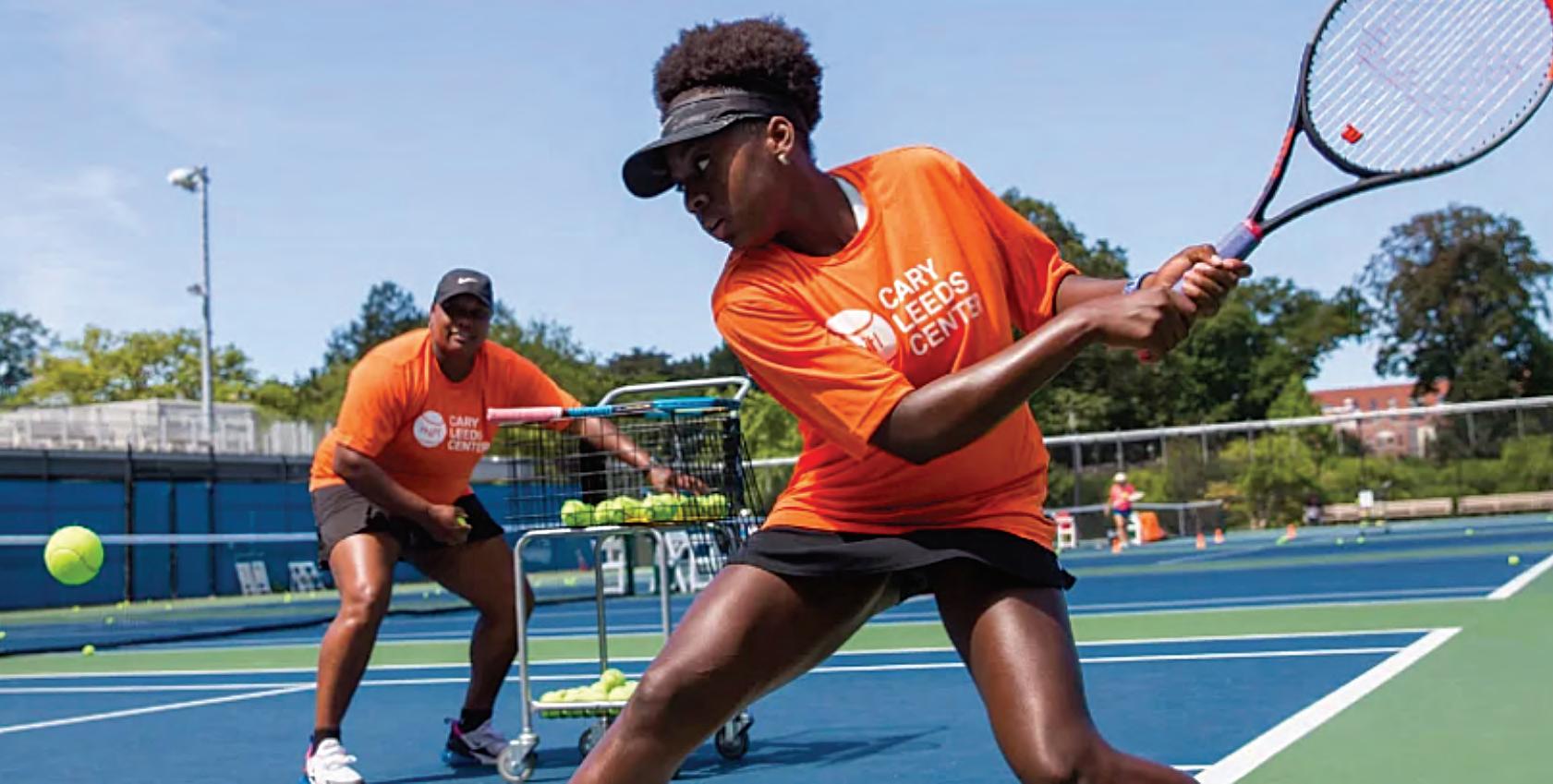
beyondthebaseline
NYJTL’s Scholar Athletes Program Helping Students On and Off the Court
By Brian Coleman
Empower Education and Opportunity
Through Tennis.
When you visit the website of the New York Junior Tennis & Learning (NYJTL), that is the tagline that you are greeted with, imposed over the face of a smiling child. And for the last half century, that has been the mission of the NYJTL, to use tennis as a vehicle to provide children in NYC better educational opportunities.
And at the forefront of this is the organization’s Scholar Athlete Program, which was created with this idea in mind back in 2022. The program umbrellas all of NYJTL’s tennis and education offerings,
and “highlights the significant benefits of providing greater frequency and depth of services to highly-engaged students”, according to the NYJTL website.
“The Scholar Athlete Program at NYJTL serves 75 low-income students from across the city and provides them rigorous tennis training and academic support,” said Raiyan Nafee, the Academic Program Director for the Scholar Athlete Program. “Students receive this support with the goal of helping them navigate their formative school years while also acting as a vehicle for them to attend college.
Through the time that the students spend with their various coaches during their sessions, our students are developing the skills and knowledge base they need to be successful student athletes, no matter the grade.”
The program provides students in grades 3-12 with academic support and top-flight tennis instruction, with the goal of 100 percent of its members graduating high school and receiving entry into college.
The program has proven to be immensely successful over the last couple of years as NYJTL has helped its students
EYOND THE BASELINE BEYOND THE BASELINE BEYOND THE BASELINE BEYOND THE BASELINE BEYON
8 New York Tennis Magazine • March/April 2024 • NYTennisMag.com
Chantajah Mills hits a backhand during a drill with Director of Tennis Ahsha Rolle at The Cary Leeds Center for Tennis & Learning. Mills is a part of the NYJTL’s Scholar Athlete Program
get to the next level. For two outgoing seniors, this is especially true.
“I am very proud of all of our students for their dedication that they show for tennis, academics, and all their other extracurricular interests,” Nafee added. “Our students attend practice multiple times a week, but everyone takes the time to make sure they are also keeping up on their academics before practice starts by doing homework or studying for tests.”
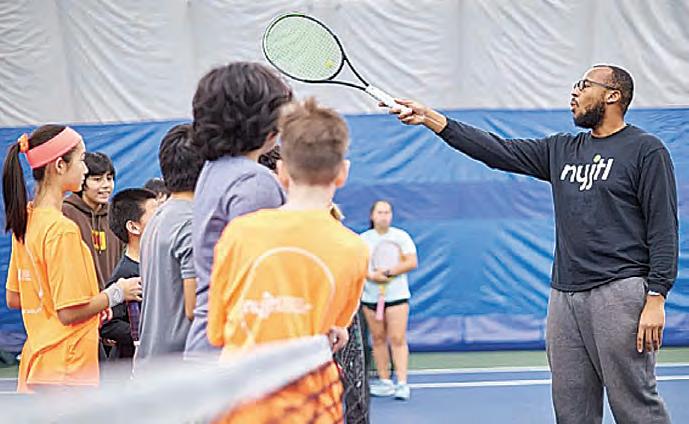
better prepare them for that next stage, and incentives a commitment to schooling. In the program, Scholar Athletes must maintain a minimum GPA of 3.0 and participate in at least 90 percent of program’s sessions, and the program has the goal of expanding to 100 students by 2026.
Chantajah Mills is entering the final months of her high school tenure, and will be taking her tennis talents and strong academics to Texas State later this fall. Mills is one of the top-ranked players for her age, coming in at #11 in New York according to Tennis Recruiting.net. She is someone who embodies not just the Scholar Athlete Program but the mission of NYJTL as a whole, as she has shown incredible dedication to her tennis but also her academics, a main reason she chose Texas State.
“The combination of competitive tennis and academics was very important to me,” said Mills. “I wanted to attend a school that would not only develop me as a tennis player but prepare me for life after college.”
Mills, who is graduating from Beacon High School this spring, plans on studying and pursuing a career in physical therapy, and part of the reason she chose Texas State was because the school had one of the best Doctoral in Physical Therapy programs in the country. Beyond that, she felt a strong connection to the team, its campus and the school’s entire atmosphere, which she said made her decision an easy one.
“After communicating for some time, I was able to go on an official visit to Texas State, which was an experience I’ll never forget,” she said. “The school and the team resonated with me from the moment
I set foot on campus. The nurturing atmosphere there solidified my decision, and I knew this was the place I wanted to spend the next four years. Two days after returning home from the visit, I verbally committed to Texas State.
The college recruitment process is oftentimes a stressful and time-consuming one, but the support system at NYJTL and the Cary Leeds Center for Tennis & Learning, through its Scholar Athlete Program, has helped alleviate some of that angst, both for the players and their families.
The program not only guides them through communicating and appealing to colleges, but also providing experiences and education that will

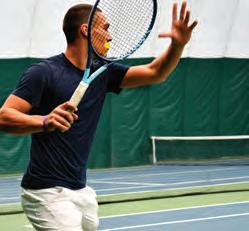
“NYJTL and The Cary Leeds Center have been incredibly supportive throughout my college process. They have offered extensive assistance with my college applications and essays, along with providing numerous scholarship opportunities,” Mills added. “When it came to creating my college recruitment video, I felt truly blessed to have them by my side. The coaches and staff not only helped me record the video but also guided me through the process, ensuring that I could effectively capture the attention of college recruiters.”
Mills sums up the Scholar Athlete
continued on page 10
ND THE BASELINE BEYOND THE BASELINE BEYOND THE BASELINE BEYOND THE BASELINE BEYOND TH
9 NYTennisMag.com • March/April 2024 • New York Tennis Magazine
beyond the baseline
continued from page 9
Program succinctly:
“They have laid a solid foundation for me and my peers, preparing us for future success.”
Autumn Clarke is Mills’ peer and fellow senior who attends the Benjamin Banneker Academy in Brooklyn. At the time of publication, Clarke has still not made her collegiate decision, but she has been fielding offers from some of the country’s top institutions, on an academic scholarship.
Clarke has received offers from Pepperdine University, Seton Hall University and Xavier University, among others, and has been the perfect representation of the NYJTL’s work.
“It wasn’t an easy process and I had to make sacrifices to get to where I want to be in this stage of my life, but I don't regret a single decision as it has led me to this point,” said Clarke. “That being
said, the journey is not over. I still have a lot of work to do, but I am extremely excited, and a little terrified, for the next stage of my life.”
For Clarke, the NYJTL and the Cary Leeds Center not only helped with the application and communication part of dealing with colleges, but in general, the support and guidance they have given over the years has prepared her for the next stage.
“NYJTL and Cary Leeds have been extremely helpful. From the beginning of the college process I have received support in terms of how to manage my college process and specific schools that would best fit me as an individual,” Clarke added. “Over the last five months I have sent numerous essays, instantly recovering feedback and comments and how to enhance my essay and develop my points. I have also received many
scholarship opportunities through Cary Leeds which has helped to better my college process experience.”
The objective of New York Junior Tennis & Learning is to develop the character of young people through tennis and education for a lifetime of success on and off the court, and in the years since it was founded it has done just that.
“During programming last year, Chantajah would come in early before her practice sessions and take extra classes remotely to stay ahead of schedule for her senior year and I am proud of her resilience and accomplishments,” said Nafee. “Autumn can be consistently seen before practice working on assignments, preparing for school, or spending this year working on her college applications. Their hard work has and will continue to pay off and I know they serve as great examples for the rest of our students.”
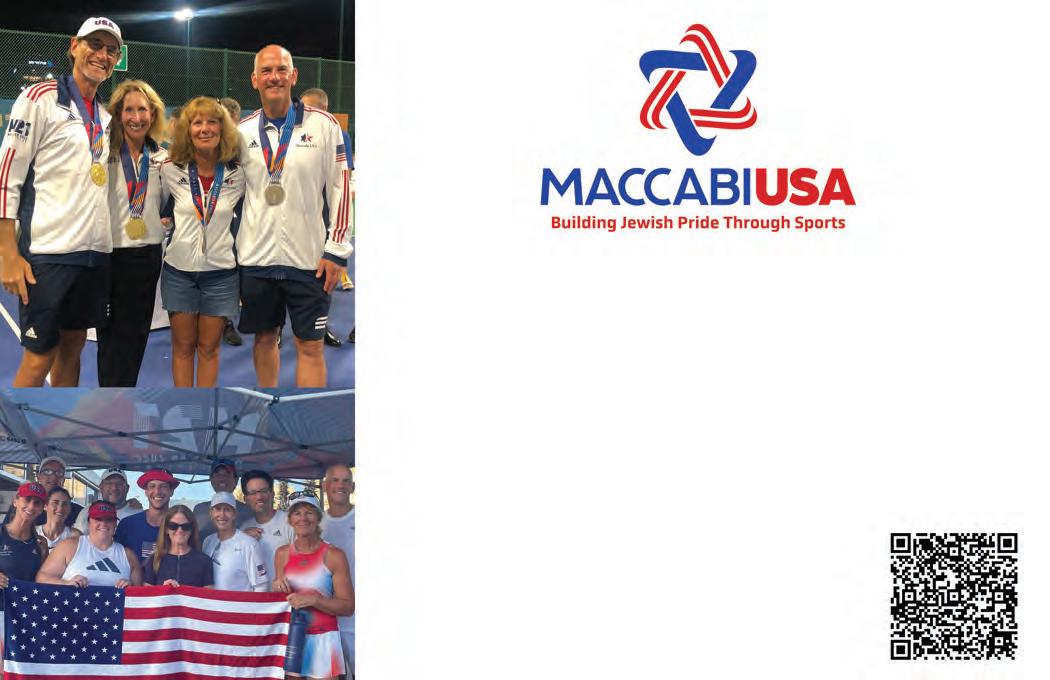
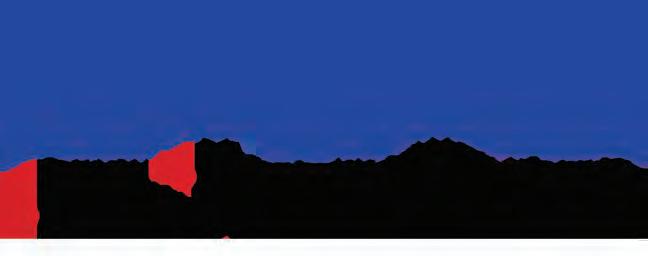


10 New York Tennis Magazine • March/April 2024 • NYTennisMag.com
The Importance of a Private Coach
By Jay Pinho
Asa player, having a person that can guide you through your journey can be a rewarding and life-changing experience. Coaches have the power to not only impact the player’s skills but also their approach towards a wide range of factors, both on and off-court.
Finding the right coach is not an easy task, and while it’s not mandatory that one has a private coach in order to improve or have success, connecting with the right person can make a world of a difference. The list below includes some of the benefits for adding a private coach to one’s training schedule:
1. Improved ability to work on individual needs
While group classes are beneficial and recommended for a wide range of reasons, such as costs, social atmosphere, playing with peers, volume of training, and more, there are some limitations when pursuing group classes only. The main one is that depending on the type of group, it can be more challenging to focus heavily on the player’s individual needs, as the coach will need to find aspects that are important to all players, instead of prioritizing one’s needs. For that, private lessons can be extremely helpful as it will allow the Pro to break things down as needed to ensure that the player understands key concepts or if a more significant technical issue needs to be addressed.
2. Assistance in character development
Being able to identify the appropriate
coach for this is crucial. While parents ultimately have the larger role in this, coaches can also play an important part in shaping the player’s attitude, work ethic, sportsmanship, and other character traits. A good coach will improve one’s forehands and backhands, but a great coach will improve the person.
3. Access to one’s expertise and counseling at a deeper level
While players can have access to Head Pros and Directors at many facilities, having a person that knows


the players well and can guide them through the ups and downs of the tennis journey can be a significant advantage.
While the three aspects above alone are significant advantages, finding the right coach for you or your child involves some due diligence. Aspects such as the coach’s experience, credentials, personality, professionalism, and connection with the player are all important. It’s a balancing act that players and parents need to monitor as the player progresses to ensure that this person is still the right coach.
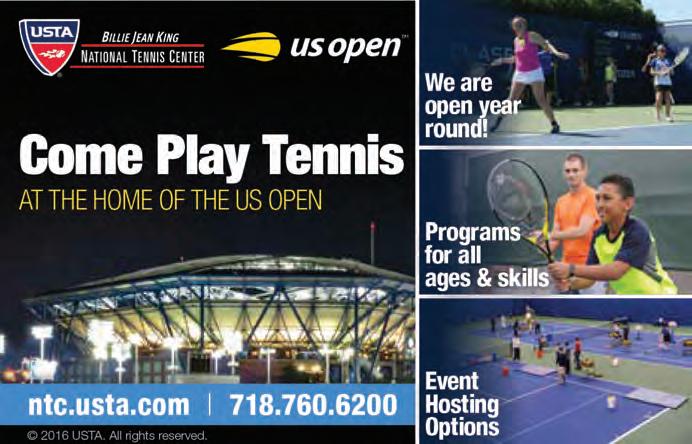
11 NYTennisMag.com • March/April 2024 • New York Tennis Magazine
Jay Pinho is the Head Professional of 10U and High-Performance at the USTA Billie Jean King National Tennis Center. He is a USPTA Elite Professional, a former NCAA DI coach and player, and has specialized in developing competitive junior players over the past decade. Currently, he is the private coach of three national champions and a WTA touring pro.
The One Handed Backhand Vs. The Two-Hander: A Long Lost Battle For The Classic Shot
By Gilad Bloom
In February, for the first time since the inception of the ATP rankings, there was not one player among the Men's Top 10 who used a one-handed backhand. Although this was certainly a symbolic day in tennis history, it came as no surprise given the declining number of players on the tour using the classic stroke, which was an integral part of traditional tennis.
As of early March 2024 there were 11 players in the men's top 100 who use a one-handed backhand, a little bit over 10 percent. If you go to the Top 1,000, you will find that it goes down to five percent. In the women's
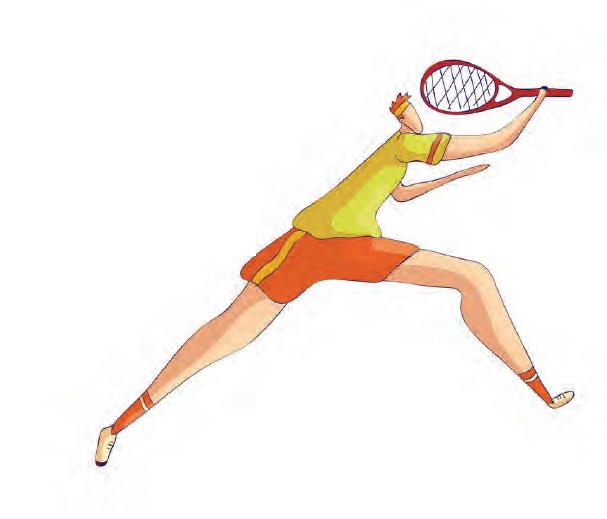
game it is even lower, and when you go to junior tournaments (which I do quite a lot), it is very rare to see more than one player using a one hander in a typical 32 draw. To anyone who has followed tennis in the past 50 years this comes as no surprise, I personally saw it in front of my own eyes during my time on the pro tour in the late 1980s and early 1990s, and as the years went by, I faced more and more players using the double handed backhand.
This trend began with Jimmy Connors in the early 70s. Connors used an unorthodox, flat two-hander with a touch of underspin. Connors
perfected that shot and showed the world the advantages of it, namely the ability to take the ball on the rise more easily, to handle a big serve and basically using the double hander as a weapon. I personally faced Connors three times. It was a deadly weapon, his strongest shot by a large margin, and one that carried him throughout an illustrious career. At the same time Jimmy was dispatching the old guard, his one time fiance Chris Evert was doing the same on the women's tour with her accurate and clean twohander.
A couple of years after Connors it was Bjorn Borg, who made the shot
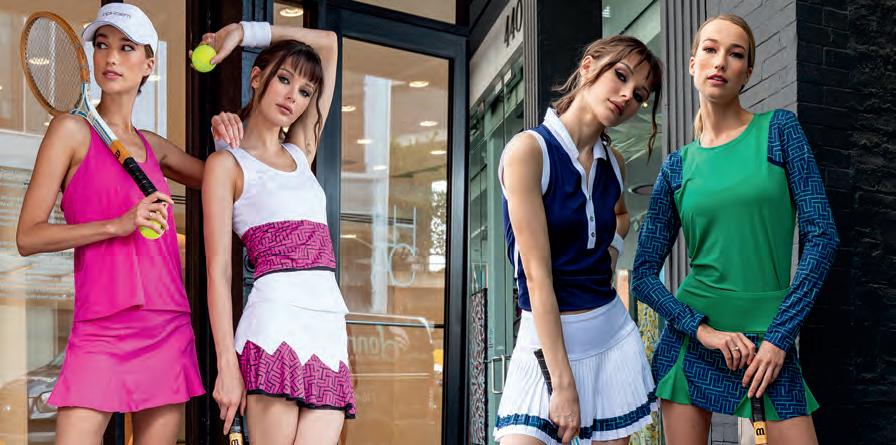
www.inphormnyc.com

12 New York Tennis Magazine • March/April 2024 • NYTennisMag.com
popular with a more spinny and whippy two-hander which actually ended up with him letting the left arm off the grip in a kind of a hybrid shot which was known in later years as "The Swedish Two-Hander". Mats Wilander, his predecessor, used that same style. Borg's incredible success (11 majors in 6 years) and unparalleled popularity started a wave that never really stopped.
The modern version allows for more topspin, made it easier to handle a high-bouncing topspin shot and in general proved to be more reliable and easier to use against the growing pace on the pro tour. Players like Andre Agassi, Lleyton Hewitt, Marat Safin, and more perfected that shot. In the new millennium, it was Andy Murray who built his game around a versatile two-hander that was both solid under pressure and a weapon when going on the attack, and of course, Rafa Nadal and Novak Djokovic have used it to help them become all-time greats.
Despite the growing popularity of the two-handed backhand there was still a strong presence during the past 50 years for the classic one-handed style which was the norm for so many years. In the 80s, it was Lendl, Mcenroe, Becker and Edberg that carried the torch while using the traditional continental grip, often
using the slice to mix up the spin and to come to the net behind it and flicking the wrist artistically when hitting a topspin. That generation grew up with wood racquets and their role models were the legendary Australian generation who used the backhand traditionally as a set up shot, rarely hitting over the ball. The best backhand of that generation was the legendary Ken Rosewall who possessed a perfectly timed backhand drive which had some pace on it but was more of a precision shot and had practically zero top spin on it. It was Guillermo Vilas who had an arm of steel who was one of the first to successfully hit the backhand with topspin.
It would be criminal if I didn't mention Roger Federer who dominated the first decade of the new millennium with his beautiful, instinctive, natural flowing one hander which was, like the rest of his game, a thing of beauty. However, Federer's backhand was the one mini weakness in his game and during some years it was the shot that failed him against the heavy lefty forehand of his main rival at the time Rafa Nadal, especially on the high bouncing clay of the French Open. In fact Federer (incredibly) switched to an Eastern Backhand in his later years and achieved more success
against Rafa which allowed him to win 4 more majors after age 30.
The irony is that while Federer dominated the tennis world with his classic one hander the reality was that the number of players using that type of shot declined with each new generation. The truth of the matter was that Federer was a unicorn who operated successfully in a new world in which the one hander was becoming less useful and less efficient in the highest levels. Federer himself, and Lendl years before him said that if they started over they would have chosen to hit their backhand with two hands.
The reasons for the demise of the one hander have to do with a few factors, one being that today's coaches are from a generation who grew up playing mostly with twohanders. Another major reason is the starting age of kids, which is 3-4 years old nowadays, and there's no way a toddler would be able to swing with one hand and so 99 percent will start hitting with two hands. For most players the two-handed backhand is easier to master.
The truth of the matter is that the one hander can still work, even at the higher levels, if taught right. It still has some advantages but the direction that
continued
on page 14
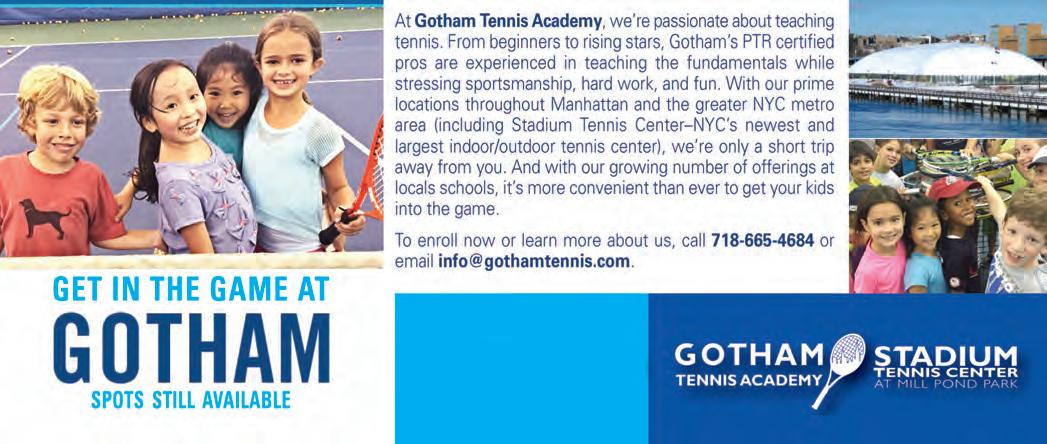
www.stadiumtennisnyc.com

At Gotham Tennis Academy, we're passionate about teaching tennis. From beginners to rising stars, Gotham's PTR certified pros are experienced in teaching the fundamentals while stressing sportsmanship, hard work, and fun. With our prime location at Stadium Tennis Center - NYC's newest and largest indoor/outdoor tennis center, we're only a short trip away from you. It's more convenient than ever to get your kids into the game
To enroll now and learn more, please visit www.stadiumtennisnyc.com or call 718-665-4684
Gotham Tennis Academy
is a leading operator of innovative tennis programs in NYC and Montauk in the Hamptons 13 NYTennisMag.com • March/April 2024 • New York Tennis Magazine
the one hundred backhand vs. the two-hander continued from page 13
the game has taken in the last few decades will make it even harder for it to survive at the highest levels, the powerful racquets and the ridiculous heavy spin with the extreme semi western grip make it almost impossible for an average person to handle a modern inside out forehand without using both hands, you have to be extremely strong and skilled.
When you look at the pros and cons of both types of backhands it is clear why the one handers are becoming unicorns. Using a one hander allows for more reach, a better slice, more versatility and a better, more natural net game. The two-hander allows for a better return of serve, more pace on high balls, it's easier to handle high pace with and to take the ball on the rise,
easier to learn and be effective at a young age and in general is by nature more powerful.
In today's game, especially on the pro tour, with the slower courts and high bouncing surfaces, most of the points are played behind the baseline, there is not as much variety and with net approaches reduced to merely being a surprise tactics it is really no wonder that you rarely see a one handed players on the pro level
anymore, also the two-handers can teach themselves to volley and slice with one hand, but if you have a one hander you are not going to start using the twohander on high balls.
You can't ignore reality and as it is for me who grew up perfecting my one hander, I have to accept it, the numbers don't lie. Personally it is a bit sad because I love my one-hander and still love to teach it, but I don't foresee this trend changing anytime soon.

Gilad Bloom, former Israeli Davis Cup player and two-time Olympian, played on the ATP Tour 1983-1995, reached the fourth round of the U.S. Open in 1990, reached a highest ranking of 61 in singles, was Israel Singles Champion three times. Bloom has been running his own tennis program since 2000 and also was director of tennis at John McEnroe Tennis Academy for two years. He can be reached by e-mail at Bloom.Gilad@Gmail.com.
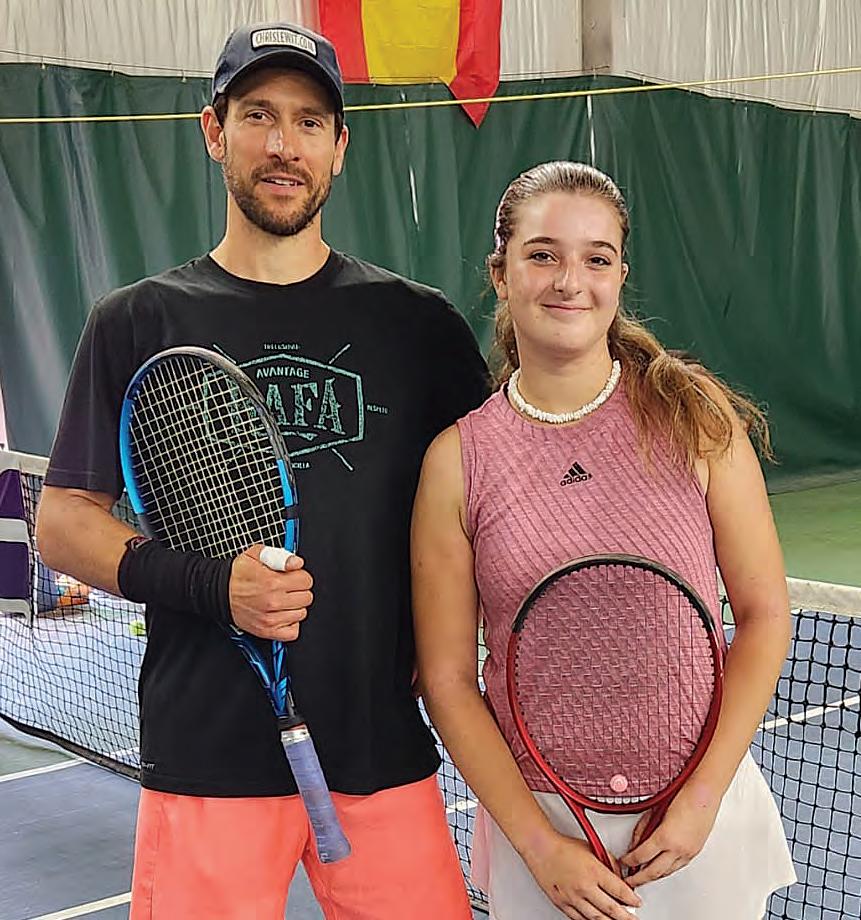

CHRIS LEWIT TENNIS ELITE YEAR-ROUND TRAINING IN THE NYC AREA HIGH PERFORMANCE SUMMER CAMP IN VERMONT TRAIN WITH THE BEST— CHRIS HAS RECENTLY COACHED SEVERAL #1 PLAYERS IN THE US! CHRISLEWIT.COM 914.462.2912 CHRIS@CHRISLEWIT.COM Chris with Elana Zaretsky, Top 10 USTA National Rank
14 New York Tennis Magazine • March/April 2024 • NYTennisMag.com
Forza Jannik!
Italy’s Jannik Sinner wins first major title and is ready for more
By Brian Coleman
You never forget your first.
Whether it’s the first time you attend a professional sporting event, your first girlfriend/boyfriend or your first car, there is always something special about that person, place or thing that sticks with us throughout our lifetimes.
And for Jannik Sinner, he and the Australian Open will be forever linked, and the tournament will hold a special place in his heart as he moves through the rest of his career.
The 22-year-old Sinner, who hails from the snowcapped mountains of northern Italy, won the first Grand Slam trophy of his career in January, etching his name into the history books with a stunning come-from-behind victory over former finalist and former U.S. Open champion Daniil Medvedev.
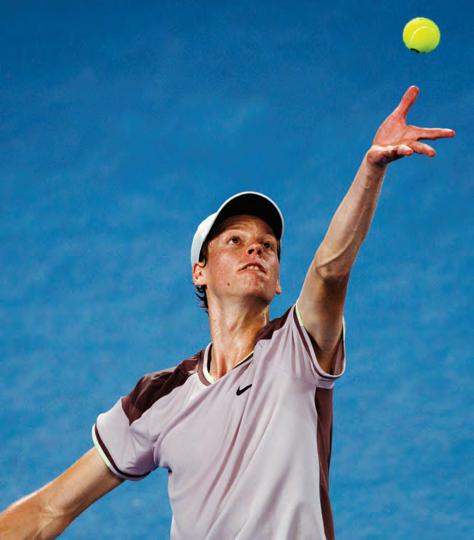
title.
“For sure,” Sinner said when asked if he was surprised with how aggressive Medevdev played in the beginning. “I was expecting something different from his side, so I had a feeling that he might come out a little bit more aggressive. But not this aggressive. He played really, really well for the first two sets or two-and-a-half sets. I tried to just play an even level, take a couple of changes in the third set. When you win one very important game, the match can change, and that was the case today.”
That game came late in the third set as Medvedev was seeking to win in straight sets. Sinner led 5-4 and when Medvedev struggled with his first serve, Sinner pounced on the opportunity and broke the Russian’s serve to win the set and force a fourth.
Despite entering the championship match as a sizeable favorite, there was nothing easy about his battle against Medvedev. The Russian, who came back from two-sets-tolove down in his semifinal against Alexander Zverev, raced out to a lead of his own against Sinner, winning each of the first two sets by a 6-3 score line to bring himself within one set win of his second career major continued on page 16
From there, Sinner found his footing, and continued his comeback. Perhaps it was a combination of his young legs, and a bit of fatigue for Medvedev who had played a multitude of five-set matches during his two weeks in Australia, but Sinner seized control of the match. He only
15 NYTennisMag.com • March/April 2024 • New York Tennis Magazine
Credit all photos to: Tennis Australia
forza jannik
continued from page 15

faced one break point for the final two sets, which he saved, and he was able to secure one break in each of those sets. All of that added up to the comeback victory for Sinner, who lifted the firstmajor trophy of his career with a 3-6, 3-6, 6-4, 6-4, 6-3 win.
“I just tried to stay as long on the court as possible, knowing that he had spent so many hours on the court,” Sinner explained in his press conference. “The more the match goes on, maybe physically I’m a little bit better today, because he played so many hours. I think that today that was the key.”
The win not only marked Sinner’s first ever Grand Slam title, but the third all-time by a player from Italy, and the first since Adriano Panatta won the French Open in 1976.
“It takes a little while to process everything,” said Sinner. “I’m extremely happy with how I handled things today. The situation on court was very, very tough. I think the most important part was the support I had throughout these two weeks. I felt that many, many people were watching also from home, so I just tried my best. I was a little bit in trouble today with twosets-to-love down, and in a little but over an hour. So I just tried to stay
positive.”
Sinner leaned on the support he felt from the fans on-site, but also, as he mentioned, those Italians watching back home. At 22, Sinner is already the most accomplished male player in the nation’s history, and he is proud to be representing them.
“It means a lot. Maybe the most important,” he said. “Because the support I get throughout the years, it’s incredible. Being able to make them happy today, because I feel like they push me also, that I can believe in myself and having so much support [from them], it’s amazing.”
Sinner’s title makes him the youngest Australian Open champion since Novak Djokovic claimed his first in 2008, and he is the second male born in the 2000s, next to Carlos Alcaraz, to win a major title. Sinner represents not only the next generation of tennis stars, but the current generation of tennis stars. His task is now maintaining this level, and aiming to win that second major.
“My journey has been quite fast. I won a Challenger when I was around 17, then I won the NextGen [Finals], then came my first ATP tournament,” Sinner said as he
reflected on his journey. “So you live in this kind of movement, and then you just try to keep improving…it’s all part of the process. Obviously having this trophy, it’s an amazing feeling. I feel grateful to have this here. But I know that I have to work even harder, because the opponents, they will find the way to beat me and I have to be prepared. Let’s see what’s coming in the future.”
Work ethic and dedication to his craft is something that Sinner will need to maintain his place at the top as he becomes more of a target for other players on the tour, but fortunately for Sinner, those are traits that have been embedded within him since he was a kid. He credits his parents for instilling that in him, as well as not putting pressure on him to become something he didn’t want to be, for why he is successful today.
“That’s the kind of mentality they gave me: ‘If you want to reach something, you have to work.’” He said. “This kind of work ethic you can learn but most of the time it’s because your parents give it to you…so they are always working and that’s what I love about them. They’re not changing anything with me. I’m a normal person who I was
16 New York Tennis Magazine • March/April 2024 • NYTennisMag.com
when I was a very young kid with a big dream and now I’m just 22years-old with still a big dream. It’s all work, there are no secrets. Or maybe [the secret is] working more than everyone else.”
Sinner is now ranked fourth in the world, and he knows and has acknowledged that his triumph in Australia only adds more pressure on him every time he takes the court, but that’s something he is embracing and looking forward to.
“There is always pressure, but pressure is something good. You have to take it in a good way. It’s a privilege because there are not so many players who have this kind of pressure…I like to dance in the pressure storm. I don’t know how to tell. Like me personally, I like it, because that’s where most of the time I bring out my tennis. I’m also quite relaxed in this occasion, because I always try to enjoy [my time] on the court. So I think pressure is a privilege to be honest.”
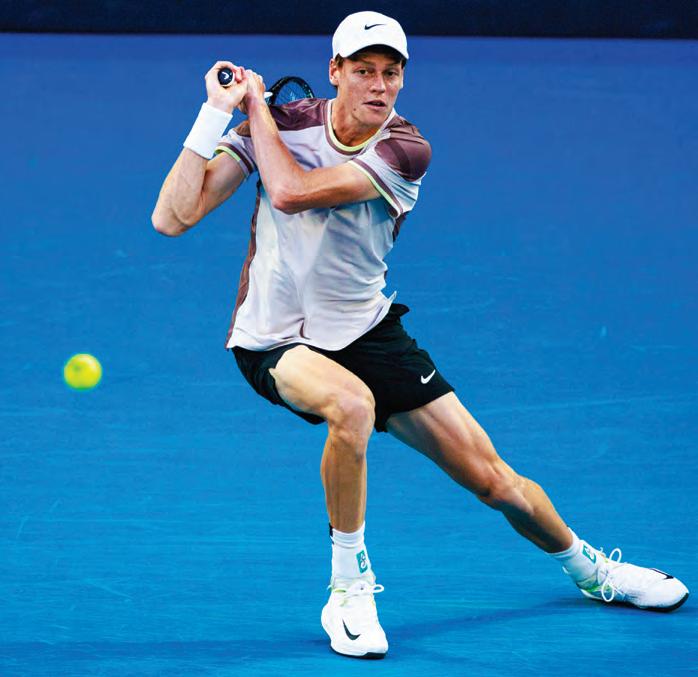
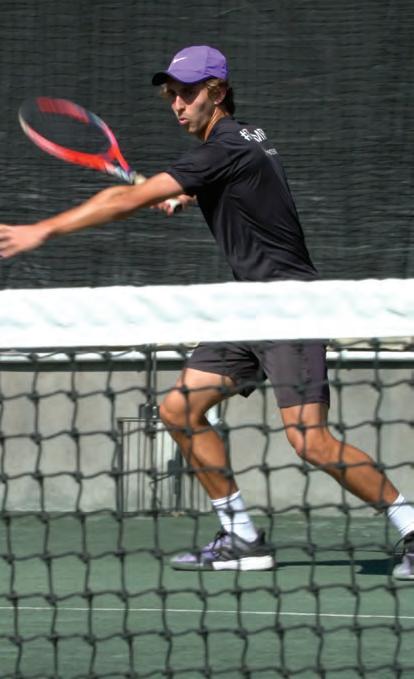
See details on seasonal programs at ross.org/tennis 631-907-5162 TENNISCENTER@ROSS.ORG • Private lessons and court rentals • Adult programs for all levels • Year-round programs for all ages • Summer Tennis and Multi-sport Programs Get Your
On
SCHOOL TENNIS CENTER EAST HAMPTON, NY
Game
ROSS
17 NYTennisMag.com • March/April 2024 • New York Tennis Magazine
The Importance of Physical Preparation in Tennis
By Daniel Deymonnaz Apud
Physical
preparation in tennis is essential to achieving success in this highlydemanding sport. From the earliest days of childhood tennis to competing at the professional level, tennis players must devote significant time and effort to developing and maintaining an optimal level of fitness, which extends to several key aspects of the game, ranging from endurance and speed to agility and injury prevention.
One of the highlights is the resistance. Tennis matches can be long and physically demanding, especially in high-level tournaments. To compete at the highest level throughout the entire match, players need exceptional cardiovascular endurance. This is achieved through specific cardiovascular training, including running, cycling, highintensity interval exercises and cross-sports such as squash or basketball, which help improve cardiovascular and muscular endurance.
A single match can last several hours and requires players to be able to maintain a high level of energy and concentration at each point. Aerobic resistance is essential to be able to maintain this level of play throughout the match. Players must be able to run from one side of the court to the other without becoming overly fatigued, allowing them to recover quickly between points and

continue competing at an optimal level. Aerobic endurance and anaerobic endurance play a very important role in tennis. Intense and fast exchanges of blows require explosiveness and muscular endurance. This is why players need to be able to make quick lateral movements, changes of direction and powerful hits again and again throughout the match. Anaerobic endurance allows them to maintain this frenetic pace without tiring too quickly.
In addition to cardiovascular endurance, strength and power are important aspects of physical preparation. Hitting the ball with power and control requires strength in the major muscles of the body, especially the legs and arms. A well-designed strength training program, including exercises such as squats, bench presses, push-ups, pull-ups and plyometrics, helps develop the strength necessary to hit the ball with power and control.
Speed and agility are critical aspects in the physical development of a tennis player. Speed represents an important factor when it comes to moving quickly and efficiently around the court, to reach the ball on time and in the optimal position to hit it. Agility is equally important, as it requires players to be able to change direction quickly and
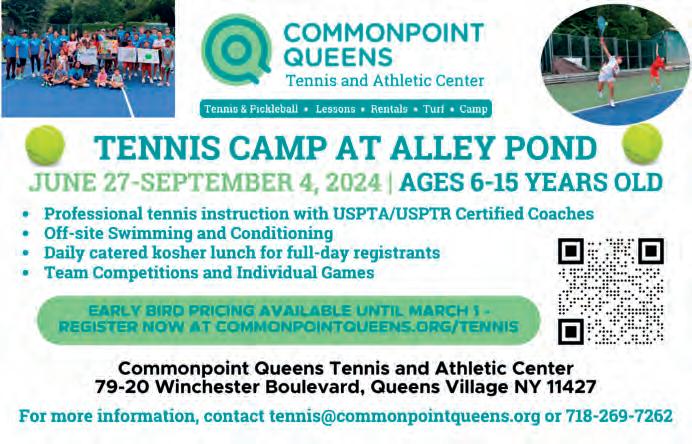
move fluidly around the court to anticipate their opponent's hits and respond effectively. Speed and agility drills, such as sprints, jumping drills, and change of direction drills, are key components of a well-designed tennis training program.
Given the explosive and repetitive nature of the game, tennis players are at risk of muscle, joint and soft tissue injuries. A strength and flexibility training program can help strengthen muscles and improve joint stability, thereby reducing the risk of injury. Additionally, stretching and mobility exercises can help improve flexibility and range of motion, which can also help prevent injuries.
Another very important aspect, which we will address on another occasion, is mental training. Tennis is a mentally demanding sport, requiring focus, confidence and resilience. Because players must remain calm under pressure, stay focused on the present moment, and handle adversity effectively. Mental training, which can include visualization techniques, meditation, and mindfulness training, can help players develop the necessary mental skills.
In summary, physical preparation in tennis is essential to achieve success in this demanding sport. From endurance and strength to speed and agility, players must devote significant time and effort to developing and maintaining an optimal level of fitness. In addition to improving performance on the court, physical preparation also plays a crucial role in preventing injuries and developing the mental skills necessary to compete at the highest level. Ultimately, physical preparation is an integral component of a player's training and can make the difference between success and failure on the court.

Daniel Deymonnaz Apud is the Director at Pozuelo Tennis Club in Madrid, Spain, and is joining Centercourt Tennis Academy in 2024. Daniel has a long history of working with Elite Players from Spain and Argentina and Works with ATP & WTA Pros. Daniel is the Founder and Creator of Tennisfit method, which is widely used across Spain and has been recommended by the Madrid Tennis Federation. He has also developed multiple programs and is leading the way with his specialized CLA Methodology.
18 New York Tennis Magazine • March/April 2024 • NYTennisMag.com
Unlocking Tennis Potential: Coaching and Development in Group and Social Tennis
By Tony Huber
"And the never-ending saga of tennis continues"
That's my tagline for the end of all my group classes. I was once told, "If you want to get somewhere fast, go alone. If you want to go somewhere far, go in a group.. Tennis has always been known for its one-on-one battles on the courts, but lately, there's been quite the racket about the rise of group and social tennis activities. What's behind this shift? Let's take a swing at it.
The Power of Community:
Imagine this: a doubles mixer where rivalries are set aside for high-fives and friendly banter. It's not just about the game; it's about the community. Group and social tennis activities bring together players of all stripes, from the casual weekend warriors to the diehard enthusiasts. It's like a family reunion, but with a lot more backhands. These activities foster a sense of belonging and camaraderie among participants, creating an environment ripe for learning and growth.
Coaching in a Group Setting: Coaching in a group setting is like being the conductor of chaos and the maestro of mayhem. Unlike individual sessions where it's all eyes on one player, coaches in group settings must juggle the needs and skill levels of multiple players on the court. It's a delicate balance of instruction, motivation, and maybe a touch of crowd control. Think of the coach as the ringmaster of this tennis circus, keeping the show running smoothly while tossing in a few tricks of their own.
Development Through Collaboration: One of the best things about group and social tennis activities is the chance to learn from each other. Whether it's picking up a killer serve tip from your doubles partner or mastering the art of the drop shot from the resident slice aficionado,
there's always something new to learn. Like “two heads are better than one”, and “four hands are better than one” and can help keep learning fun.
Skill Development Beyond the Court: Sure, we're here to improve our technique and tactics, but let's not forget about the real MVPs: sportsmanship and teamwork. Through friendly competition, players learn vital life skills like sportsmanship, perseverance, and leadership. It's a crash course in life, served with a side of exercise and a dash of sweat.
The Role of the Coach: Coaches in group and social tennis activities are more than just instructors; they're mentors, motivators, and part-time comedians. A well-timed joke can work wonders for morale, especially when it distracts from that double fault. As John McEnroe famously said, "You can't be serious!" But in all seriousness, coaches

create a positive and supportive environment where players feel empowered to push their boundaries and reach their full potential.
Conclusion: As the tennis world embraces the social side of the sport, these programs offer not only a chance to connect and socialize but also unique coaching and development opportunities. By embracing the power of community and collaboration, players can unlock their full potential on and off the court. Coaches find themselves at the forefront of this new era, shaping not just tennis skills but also fostering a sense of camaraderie that keeps players coming back for more. So, grab your racket, join the fun, and remember: in tennis, the only thing more important than your backhand is your backhand compliment. Let's keep swinging, together.
Tony Huber is the Head Professional & Adult Program Director at Advantage Tennis Clubs. Before coming to Advantage Tennis Clubs, Tony was the Director of High Performance at the Cary Leeds Tennis Center in The Bronx. Tony is a PTR Certified Professional and has been
PTR Touring Coach of the Year and PTR Humanitarian of the Year. He started his coaching career in 1993, at Van der Meer Tennis on Hilton Head Island. His accomplishments include
Liezel Huber to #1 in the world (doubles) for 199 weeks, as well as numerous other top
earned college tennis scholarships. Huber leads his signature Adult Program at Advantage Tennis Club’s Roosevelt Island Racquet Club all-year round.
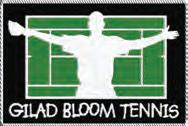
Call 914-907-0041 or E-mail Bloom.Gilad@gmail.com www.GiladBloom.com Indoor Sessions End March 31st Outdoor Season Begins April 1st Groups, Private Lessons and Tournament Travel Come train with Gilad Bloom: 27 years of High Performance coaching 13-year career on Pro Tour, including Davis Cup and Olympics 19 NYTennisMag.com • March/April 2024 • New York Tennis Magazine
players during
and developed
who
named
coaching
his 15 years on the WTA Tour. He coached in two Olympic Games (Sydney and London)
many top juniors
By Brian Coleman
spotlight Junior Player
Cal Wider Professional Children’s School
Laterthis fall, Cal Wider will begin the next stage of his tennis career and embark on the newest chapter of his life when heads off to college. Wider is headed to Amherst College in Massachusetts where he will compete for the Men’s Tennis team and pursue a degree.
Wider fielded an array of offers from different colleges before deciding on Amherst, and chose the school because it checked all the boxes on what he was looking for.
“From the beginning, I knew that I wanted to go somewhere very academic, and that was definitely at the forefront of my recruiting process,” he said. “I looked at some top tennis schools in Division I, as well as some of the top academic schools across the country. I landed on Amherst because, first of all, it’s a great academic school, they have great tennis coaches in Todd Doeblerand Assistant Kip Rogers, who have a lot of experience coaching at the highest levels of college tennis, and I really connected with all of my future teammates when I visited there. It ended up being the right atmosphere, and the perfect blend of academics and tennis. I’m very excited to start at the end of August.”
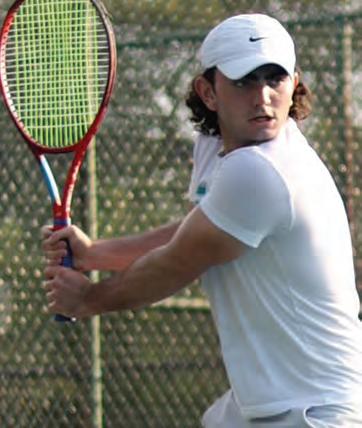
pursue a degree in economics, but also has a wide range of interests that Amherst allows him to explore, including mathematics, biology and engineering.
His dedication to academics has been evident since the beginning of his junior career, and is part of the reason he will be graduating from Professional Children’s School (PCS) with the highest of honors in the spring. PCS is an independent day school in NYC that provides flexible scheduling options to accommodate top athletes to ensure they don’t fall behind academically while not interfering with the training and traveling required of a top junior tennis player.
Wider played both chess and tennis, as well as baseball, growing up but stopped playing chess and baseball as he got older so he could focus primarily on his tennis, a sport he showed great promise in from an early age. As he pursued his tennis passion, he and his family chose to attend PCS because of the school’s support system, and it has turned out to be the right decision.
Wider has always taken great pride in his education and his work ethic when it comes to academics, so that was a top priority for him when he was making his decision. He plans to
The flexibility, and the expertise of the school’s teachers and administration, have allowed Wider, a New York native, to spend many of the winter months down in Florida so he can train and focus on his tennis, but also maintain his academic standing.
“I came to PCS in eighth grade. The school has an excellent
20 New York Tennis Magazine • March/April 2024 • NYTennisMag.com
junior player spotlight junior player spotlight junior player spotlight junior player spotlight junior player spotlight junior player s
academic program. The teachers are phenomenal and really make PCS what it is,” said Wider. “It’s a great academic school that gives you the opportunity to pursue your profession at the highest level, without restrictions. It gives you a lot of freedom and flexibility. Just recently, I was in France for a month playing tournaments and the teachers re-worked their schedules so I can do Zoom calls with them despite the time difference. Overall it’s just been such a great experience, and I am very grateful to all of them for helping me to get where I am.”
Training in Florida has given Wider access to a lot of training partners as well as compete in the abundance of tournaments that are available there yearround.
“There are so many more tournaments in Florida, they seem to be ubiquitous here, between UTR, ITF and USTA events. Every weekend it seems like there is a UTR prize money event, and that’s been
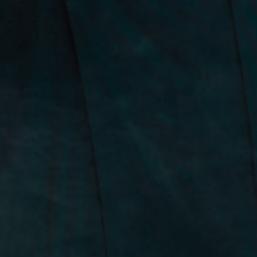
beneficial for me,” said Wider. “You also have a lot of young pros here, guys who are ranked in the 700-1,000 range on the ATP Tour, and they’re here grinding and trying to make it on tour. I have been able to train with them and play practice matches against them, which has helped me a lot.”
Wider is a player who is relentless on court and exudes a lot of effort in order to be successful, so another key for him has been an improvement in his stamina on the court.
“There are a lot of coaches here from South America and they have a different style of coaching, one that’s based more on endurance,” he explained. “We do a lot of side-to-side running drills and for someone with a game style like mine, it has helped me get into great shape, and prepare for those grinds during matches.”
And Wider is now prepared for the next step both on the court and in the classroom, and is counting down the
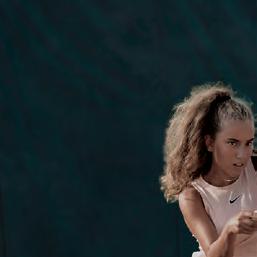
days before he arrives on the Amherst campus.
As a junior tennis player who did his high school education remotely, there is a lot to look forward to when it comes to college, both to competing with and for a team, but also all the social components that come with being away at a school.
“I’m really looking forward to new experiences at college” he said. “ABecause tennis is such an individual sport, I’m really excited to play for a team. Being able to experience that aspect of college tennis is really intriguing for me, so I’m looking forward to that as well as continuing my academic career at a great institution.”
Dr. James Dawson, Head of School at PCS, said:
“We are so incredible proud of Cal for his success, both on the tennis court and for his academic achievements, as he represents the very best of PCS through his work, his effort, his care, his tenacity and his accomplishments. Bravo!”

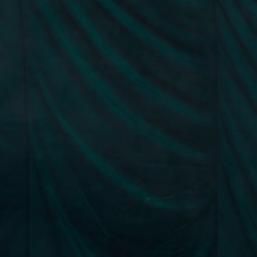







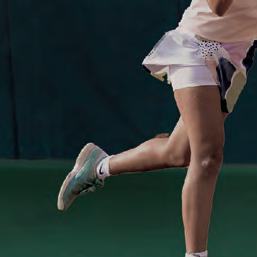



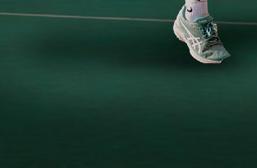



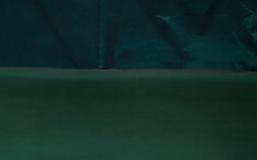
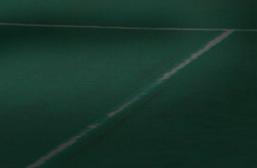



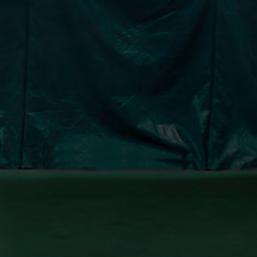
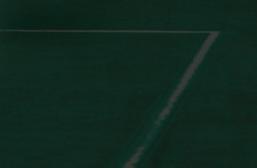

21 NYTennisMag.com • March/April 2024 • New York Tennis Magazine
juni
spotlight junior player spotlight junior player spotlight junior player spotlight junior player spotlight junior player spotlight
USTA Eastern Metro Region
Metro Regional Council Director Sharon Simmonds Reflects on First Year in Office
Timeflies when you’re helping grow tennis! A year after she stepped into her role as Metro Regional Council Director, Sharon Simmonds reflects on all the efforts the governing body has made to put racquets in the hands of new players in the NYC area.
You’ve been involved with the Metro Region Council for many years— including serving as its secretary. What was the big highlight for you in leading this group of volunteers for the first time?

Simmonds: So many wonderful things happened in the first year, but for me the most notable work that was done was [in collaboration] with Eastern’s Diversity, Equity and Inclusion department. To celebrate National Tennis Month in May, we worked with disability services organization Innovative Resources for Independence (IRI) to introduce tennis to those who use their programming.
Why was this project so meaningful to you?

Simmonds: I’m proud of this collaboration because introducing tennis to the IRI was in line with the organization’s mission to offer people with intellectual, developmental disabilities quality services and meaningful opportunities that encourage healthy lifestyles.
Was there a particular moment from the past year that made you proud to be involved in this capacity and ultimately encapsulated your overall experience growing tennis?
Simmonds: There was a workshop we held in June in conjunction with Love Serving Autism where 43 New York City teachers learned how to teach adaptive tennis [a version of the
game that is “adapted” so that people with various disabilities can get the chance to play]. One of the teachers, Alexander Dobrin, integrated what he learned into his classes. Then, he and one of his students, Lena Franklin, competed in USTA Eastern’s Adaptive Sectional Championships in September and finished as finalists! They went on to compete in the Adaptive National Championships in Orlando and won a sportsmanship award. Watching everything come full circle was the attainment of my goal to create opportunities for individuals to get exposed and to spark their interest to play the game of tennis.
Do you hope to complete similar work in the year ahead? What are your goals for 2024?
Simmonds: My goal is really in line with USTA Eastern’s mission: to promote and develop the growth of tennis. I want to continue to make inroads in the diversity, equity and inclusion space. I also want to grow non-competitive adult social play—just pure, fun tennis! I would really like to establish more continuity. Getting people to play the game is doable. The real challenge is keeping them playing, especially in the colder months.
What have you learned in your first year in this role?
Simmonds: I have learned a lot! This experience has really reinforced what I know to be true about tennis, and that is that it adds meaning to the lives of those who play, it transcends boundaries and borders, and that all people can enjoy the sport once the opportunity is given. I understand so much more about this game for which I have a tremendous passion.
Simmonds (in black dress) smiles at the 2024 USTA Eastern Annual Awards Dinner
22 New York Tennis Magazine • March/April 2024 • NYTennisMag.com
Dobrin and Franklin finished as finalists at USTA Eastern’s 2023 Adaptive Sectional Championships mere months after Dobrin attended a training on how to teach adaptive tennis
USTA Eastern Metro Region
Metro Region Volunteers Awarded at USTA Eastern’s Annual Awards Dinner
USTA Eastern held its Annual Awards Dinner January 27, 2024 at the Westchester Marriott in Tarrytown, N.Y. The yearly fete honors those who have made remarkable contributions toward growing and promoting tennis at the grassroots level, and three Metro Region volunteers were recognized for their efforts: Metro Region Council member Isis Gill was the youngest person ever and first Black woman to be named Clinician of the Year; Deb-Rose Andrews received the Umpire Service Award; and Jan Walker was recognized as the Metro Region Volunteer of the Year.
The organization also honored longtime junior coach Lawrence Kleger with its Lifetime Achievement Award.


Kleger most recently served as the director of the John McEnroe Tennis Academy (JMTA) at Sportime Randall’s Island in Manhattan. Over the course of his decades-long career, Kleger trained countless Eastern juniors who attained local, sectional and national rankings.
Perhaps Kleger’s most prominent coaching relationship was with top junior Noah Rubin. Over the course of their ten years together, Rubin won some of the biggest junior events in the world, including capturing the 2014 Wimbledon boys’ singles title and both the singles and doubles titles at the 2014 USTA National Junior Championships. Rubin went on to
become the ITA No. 1ranked freshman and an All-American at Wake Forest. He was also the runner-up at the 2015 NCAA men’s singles championship. Rubin launched his professional tennis career in the summer of 2015 and ultimately reached a career-high ranking of world No. 125.
In August 2023, Kleger unfortunately suffered a devastating fall that caused numerous injuries, including life-threatening skull fractures and related brain trauma. After undergoing brain surgery and spending several months in the ICU at Columbia Presbyterian, and then at Rusk Institute, Kleger is now continuing his recovery at a neuro rehab on Long Island. His stepdaughter, Nicki, attended the awards dinner and accepted on his behalf, while John and Patrick McEnroe filmed a video message (from the Australian Open) in support of their friend.
Though he has a long road back to a court, Kleger is still very much himself. He continues to champion Eastern tennis and speaks at length about its bright future.
“Like John McEnroe, I believe that there are great American tennis champions somewhere in or near New York City,” Kleger says. “So, my goal remains to find and support those young champions. I wouldn’t want to be anywhere else but here.”
Regional Council Director Sharon Simmonds (left) poses with (from left to right) Gill, Andrews and Walker
23 NYTennisMag.com • March/April 2024 • New York Tennis Magazine
Kleger’s family accepted the Lifetime Achievement Award on his behalf
USTA Eastern Metro Region
USTA Eastern Celebrates American Heart Month with Free Cardio Tennis

SeveralUSTA Eastern facilities—in collaboration with NewYork-Presbyterian—hosted free USTA Cardio Tennis events across New York City to commemorate American Heart Month and spotlight the many cardiovascular benefits of the sport.
Tennis has long been heralded as a fantastic option for bolstering heart health. 30-40 minutes of aerobic exercise around five times a week can ultimately strengthen the heart and other muscles in the body over time, notes NewYork-Presbyterian Interventional Cardiologist Dr. Ajay Kirtane. One of Dr. Kirtane's favorite activities for fulfilling this requirement? Tennis.
"Tennis was my sport growing up," he explains. "I actually started playing as a kid and played on my high school team. My whole family plays tennis! My parents actually met on a badminton court in India and transitioned to tennis here in the states."
Thanks in part to its many benefits, the game has remained a throughline over the course of Dr. Kirtane's life. He notes that he and his extended family take a trip each
summer to Bethany Beach, Delaware, and tennis serves as one of the major cornerstones of the vacation.
"We literally have 4-5 courts going simultaneously in the evening and play across multiple generations," he says. "Between that and our grand slam group text activity, the sport definitely keeps us alive at all times!"
With its free USTA Cardio Tennis offering, USTA Eastern and NewYork-Presbyterian hoped to transform the sport into a similar constant for those across the New York and New Jersey area. (USTA Cardio Tennis is a high-energy fitness workout that combines the best features of tennis with cardiovascular exercise, delivering a full-body, calorieburning workout in a fun, social setting.) Ultimately, over 100 participants picked up a racquet through the initiative.
“USTA Eastern is always looking for innovative ways to bring more people into our tennis community,” said Monica LaMura, USTA Eastern’s Director of Marketing & Communications. “We were thrilled to be able to hold these events and showcase the many health benefits of tennis.”
24 New York Tennis Magazine • March/April 2024 • NYTennisMag.com
Health: Cunningham Tennis and the National Tennis Center in Queens, and the Cary Leeds Center in the Bronx were among the participating facilities in USTA Eastern’s Cardio Tennis initiative

Century Tennis
56 Brook Avenue
Deer Park, N.Y. (631) 242-0220
CenturyTennis.com
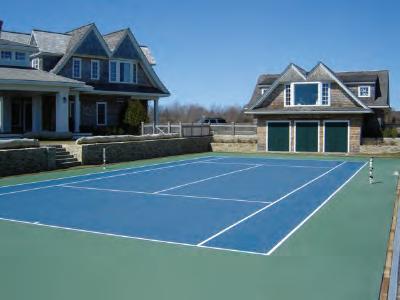
Since 1965, Century Tennis has been dedicated to the growing sport of tennis by building quality tennis courts and providing a specialized service to the tennis club industry, as well as the private community. By maintaining a highquality of service and customer satisfaction over the years comes a trust that is ever so hard to attain.
“We simply want to be the best at what we do.”
In order to build great tennis courts, you have to start at the bottom with an understanding of soil conditions and converting it to a good base. Lasercontrolled road graders enable Century Tennis to build with accuracy.
Building Post-Tensioned Concrete, instead of the old asphalt type courts, are proving to be a great alternative for “crack-free” tennis courts.
Whether it is a hard court with the softness of Deco-Turf or Classic Turf Rubber or whether it is a soft court like Har-Tru or Hydro Court, or a surface that offers a little of both like Nova Synthetic Turfs … Century Tennis can deliver.
The company is a member of the American Sports Builders Association (ASBA), Better Business Bureau (BBB) and the Long Island Builders Institute (LIBI). Century Tennis’ building techniques meet and or exceed those of the ASBA and the USTA and with its “Certified Tennis Court Builder” staff assures this quality. The company’s intention is to deliver the very best tennis courts for the most demanding players and tennis club owners.
“Expanding the game of tennis, one court at a time.”
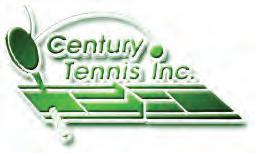
Har-Tru LLC
166 Industrial Way
Troy, VA 22974 (877) 4-HARTRU
HarTru.com

Har-Tru, LLC is a global sports company based in Troy, VA. It is the world’s leading provider of court surfaces, court consultation, court equipment and accessories - serving tennis, pickleball and other sports. The company strives to help others build and maintain the best courts in the world, leveraging its products, knowledge, and experience to meet the needs of each customer most effectively. Har-Tru is active in the industries it serves as an advocate and sponsor of tennis and pickleball related activities.

25 NYTennisMag.com • March/April 2024 • New York Tennis Magazine

Laurel Tennis & Sport
31 Prospect Street Huntington, N.Y. (631) 547-5200
www.thelaurelgroup.net
bgoodspeed@thelaurelgroup.net
Tennis and Sports Courts Since 1984

Laurel Tennis & Sport (formerly Gold Coast Tennis) has been trusted for more than 35 years by Long Island’s top Country clubs and hundreds of homeowners to design, build and maintain tennis and sport courts. Laurel Tennis & Sports in-house team of experienced and knowledgeable tradesmen use only the best quality materials and have the ability to address any situation to ensure your court is ready for you to play at your highest level.
Laurel Tennis & Sport specializes in concrete, clay and asphalt courts. They also provide annual Har-Tru reconditioning, as well as weekly/bi-weekly/monthly court servicing. All weather court repair incorporates the use of Rite-Way crack repair system and a new product, Pro-Cushion.
In addition to building and maintaining the court surfaces, Laurel Tennis & Sport designs and builds the entire court environment including fencing, irrigation, lighting, planting, masonry and seating furniture. Our approach ensures that your tennis or sport court enhances the appearance of your home and fits with your outdoor living lifestyle.

National Metal Industries
2 Neil Ct Oceanside, NY 11572 NMIFence.com sales@nmifence.com (516) 594-0365
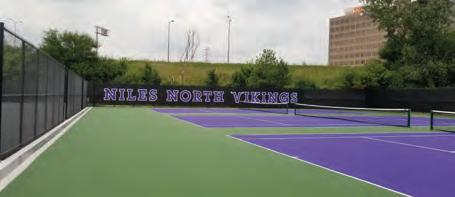
For over 60 years National Metal Industries Fence has been one of the leading manufacturers and distributors of metal, PVC, aluminum, and wood fencing on the East Coast, and has the reputation, experience, knowledge and expertise for all of your fencing and wind screen needs.
NMI offers NOW Shade Windscreens with the benefits being:
• Blocks up to 90% of the Sun's harmful rays
• Will not fade, shrink, mold and mildew
• 90 percent visibility blockage
• Applicable for all season - mildew and mold free
• Water & UV resistant fabric
• 75 percent Privacy
While they come in colors green, black, brown, tan, blue, grey, white and red, NMI offers Custom Logo Banners to help showcase your brand, school colors and more. Perfect for field advertisements, construction sites or store fronts, our digitally printed banners incorporate three-to-five-year solvent inks to ensure vibrant color and a long lifespan. All four edges are reinforced with a double-stitch 3-ply hem and grommets every 12".
NMI has the ability to put full color logos digitally printed on our its eight oz mesh then cut out and sewn onto any of our windscreens. An excellent and economical way to add multiple full color logos to your windscreen!
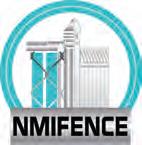
26 New York Tennis Magazine • March/April 2024 • NYTennisMag.com

The Farley Group–Air-Supported Structures
6 Kerr Crescent
Puslinch, Ontario, Canada (888) 445-3223
TheFarleyGroup.com

The Farley Group has installed more than 30 tennis bubbles in the New York City and Long Island areas, helping tennis facilities extend their season into the winter months. For seasonal or permanently installed tennis bubbles, The Farley Group is your number one source for quality, service and dependability.
As a manufacturer, supplier, installer and service provider of air-supported structures, The Farley Group works with you from conception to implementation and beyond. The company’s philosophy is built around the belief that a customer never leaves The Farley Group—from project planning and installation to ongoing service and maintenance—we become a trusted member of your team.
The company’s expert staff of sales consultants, designers and highly-skilled production and service professionals are well-experienced in all facets of air structure technology, ready to help you through every phase of your tennis bubble project.
VelveTop Products
1455 New York Avenue
Huntington Station, N.Y. (631) 427-5904

VelveTop Products is a family-owned and operated business since 1968. VelveTop is a stocking distributor of a full line of tennis court materials and equipment, including:
• Deco Turf: The Cushioned Tennis Surface of Champions
• Har-Tru: Developing Champions Since 1932
• Douglas Sports: Nets, Windscreens, Divider Nets
• RiteWay Crack Repair Systems
• Hadeka Red Clay
For more information, call (631) 427-5904, e-mail elsy@velvetop.com or visit VelveTop.com.
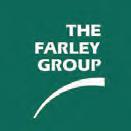

27 NYTennisMag.com • March/April 2024 • New York Tennis Magazine
2024 New York Tennis Magazine Camp Guide 2024 New York Tennis Magazine Camp Guide
Advantage Junior Tennis Camp - Two Great Locations
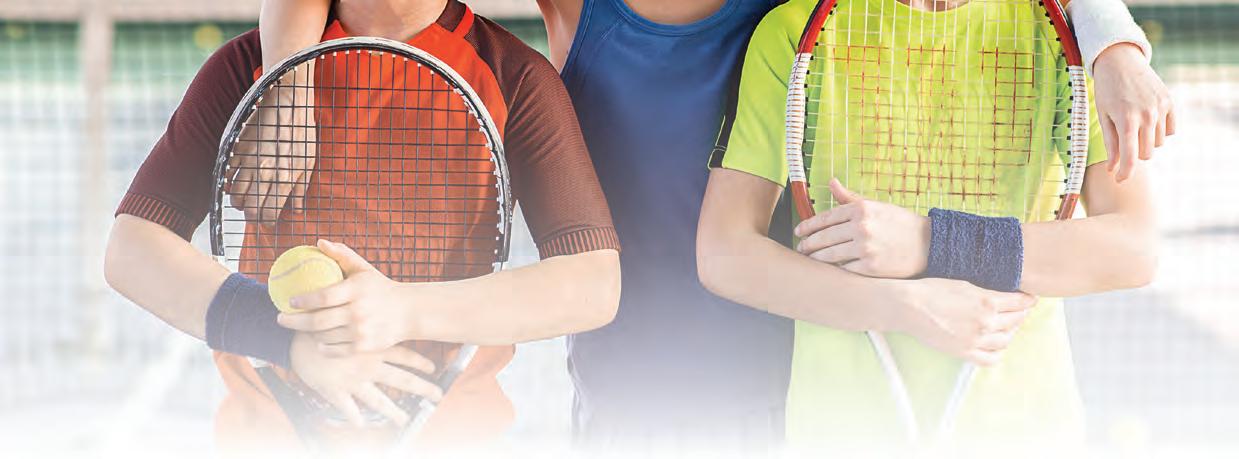

Roosevelt Island Racquet Club (RIRC)
281 Main Street l Roosevelt Island, N.Y.
Contact: play@advantagetennisclubs.com l (718) 239-7917 l AdvantageCamps.net
Manhattan Plaza Racquet Club (MPRC)
450 West 43rd Street l New York, N.Y.
Contact: play@advantagetennisclubs.com l (718) 239-7917 l AdvantageCamps.net

Advantage Junior Tennis Camp is “tennis heaven for kids”–giving players ages seven to 17 more drills, more skills and more time on the courts!
The City’s oldest and most-established junior tennis program. Girls and boys learn from a team of pros— including some of the finest coaches in the East. Campers use 12 Har-Tru indoor courts and three outdoor courts to improve their game with instruction, match play and crosstraining. And if you’re looking for more tennis instruction, we can arrange a private lesson with the RIRC coach of your choice during your Camp week. Choose single or consecutive weeks—and ask about the sibling discount!
Advantage Jr Tennis Camp is hosted by the Roosevelt Island Racquet Club and Manhattan Plaza Racquet Club. Lunch included in a full day of camp. Sign up today!.

28 New York Tennis Magazine • March/April 2024 • NYTennisMag.com
2024 New York Tennis Magazine Camp Guide
Advantage Red Ball Tennis Camp - Three Great Locations
Manhattan Plaza Racquet Club
450 West 43rd Street l New York, N.Y.
Contact: play@advantagetennisclubs.com l (718) 239-7917 l AdvantageCamps.net
Roosevelt Island Racquet Club
281 Main Street l Roosevelt Island, N.Y.
Contact: play@advantagetennisclubs.com l (718) 239-7917 l AdvantageCamps.net
Upper East Side: Wagner Middle School
220 East 76th Street l New York, N.Y.
Contact: play@advantagetennisclubs.com l (718) 239-7917 l AdvantageCamps.net
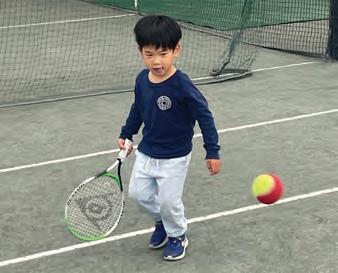
Advantage Red Ball Tennis Camp delivers a super summer for kids ages four through eight, with tennis customized for age, ability—and fun! During half days from 9:00 a.m.-noon, campers love playing with smaller racquets and slowerbouncing balls that make the game accessible. Engaging drills and games mean there’s always something new to learn and enjoy. Camp is led by an all-star tennis pro who specializes in teaching kids. And our coaches receive intensive specialty training in teaching the Net Gen 10 & Under curriculum. Sign up today!



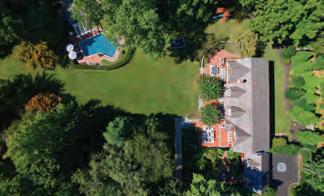


29 NYTennisMag.com • March/April 2024 • New York Tennis Magazine
neri e Ex t att l Es eaRe uro Yo t atvaevEl t t liry c ev ev c r ea o fo cne ri x ex et at ure c t atimt e ul h ts in tul ser h h h wec h t gh n of hi t atinb mb e co h s ttits.Iul m & r sli ano ssie fe r n tev ovr e a p v av d, I h nalsg I n n Lot o neg ury auxglin cudor p p o s a t A a o of m a g a a d e e f h & e eva e Y R a .tn se erpe t I r ath t ath e t civr h se cuoh t i y, egrit d of in ecok r r ty g a a SELAY S RUXUNT L ECER 000,00 6,5$ 8 .s | 3hta5b.s | 5de5 b O, ane Lsne en V92 000,00 5,6$ e rc3a8s | .hta5b55.s emodnal,PdaosRthgie2 serc4 a elliv ook r Bdl 000 ,000 ,4$ 5 .s | 5de5 b e ltaeh3W21 sercs | 2 ahta b y rubtsedWl,Odaoy R S.W AW Y LTUNITOR AL HOUSING OPP UYEQS B OKER AND ABIDE S IS A LICENSED SA PA S. CSA PA TED WITH C AT S ER ON AFFILIA OMP OMP A omass.compa@csarp 157.417.51645 | O 5 4 74 65.9.16M 5 onserspleeSaattlEseaedRsenLic eamTe tayClinwaciConreTTh t Division enainmtertts & Enorass Sp Comp tgendingAound F ong IslanL AMIIA S ARP on T 7 TE BR ATTA SREAL E SPALE TE S ATTAS AMII IS A REAL E A SSARPA P TA TA
2024 New York Tennis Magazine Camp Guide
Advantage Day Camp - Two Great Locations
Roosevelt Island Racquet Club (RIRC)
281 Main Street l Roosevelt Island, N.Y.
Contact: play@advantagetennisclubs.com l (718) 239-7917 l AdvantageCamps.net
Wagner Middle School
220 East 76th Street l New York, N.Y.
Contact: play@advantagetennisclubs.com l (718) 239-7917 l AdvantageCamps.net

Advantage Day Camps are recognized as some of the best day camps in New York City. We strive for excellence and consistency in our teams and facilities. Our commitment to providing a safe and enriching environment for your child ensures their summer is filled with growth, skill-building, and most of all – fun!
Join us for an unforgettable experience, where our dedicated staff and innovative programs set the standard for day camps in the heart of the city. Your child will enjoy a variety of camp activities including Tennis, Robotics, STEAM Programs, Athletic Sports, Arts & Crafts, Chess, Magicians, Planetarium, Nature, Water Play, and many more! Enroll your child today for a summer of trusted excellence at Advantage Day Camps!

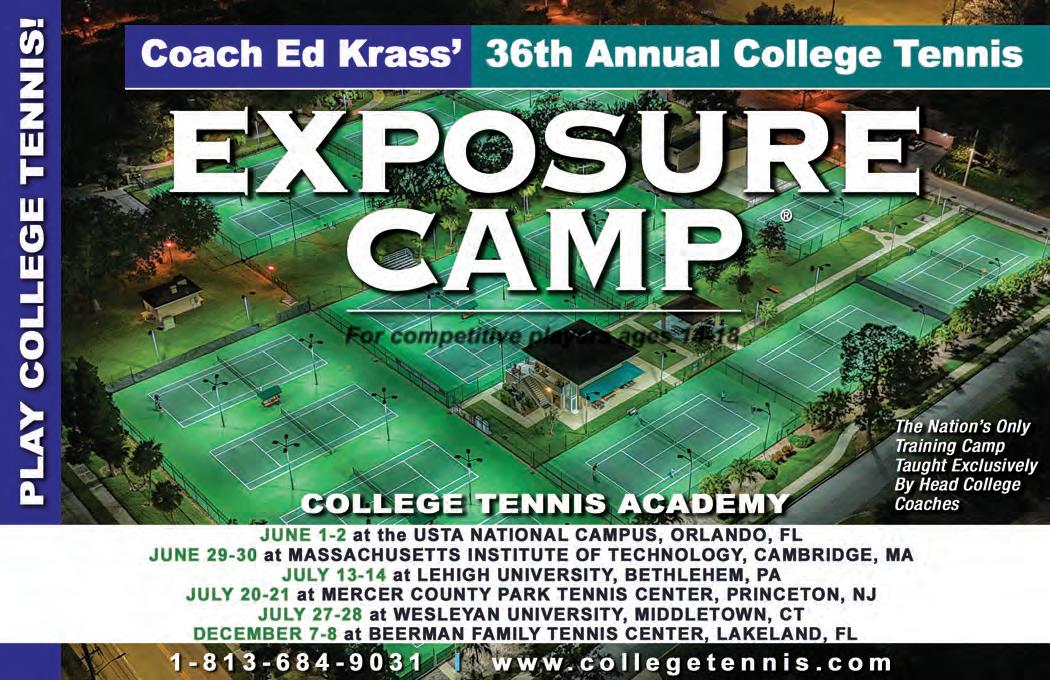
30 New York Tennis Magazine • March/April 2024 • NYTennisMag.com
Alley Pond Tennis and Athletic Center
79-20 Winchester Blvd l Queens, N.Y. 11427
www.commonpointqueens.org/tennis l tennis@commonpointqueens.org l 718-269-7262
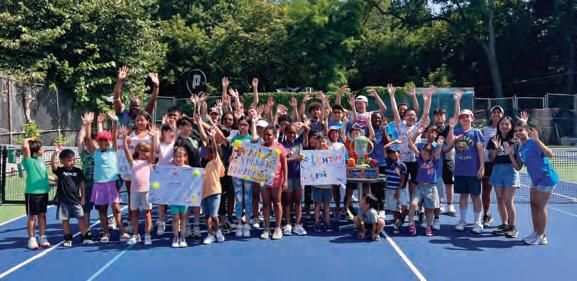
Take your game to the next level by spending your summer at Tennis Camp at the Commonpoint Queens Tennis & Athletic Center at Alley Pond Park, which runs from June 27 through September 4 and directed by Aki Wolfson! The premier tennis camp in New York City for children ages 6-15 years old provides instruction, drills and match play by our highly qualified USPTA/USPTR Certified Coaches. We also offer off-court cross training fun activities to supplement campers tennis skills. These activities will include soccer, basketball and a widely spreading sport, pickleball.
Each afternoon there will be a theme based activity, where campers are separated into teams to compete with each other to test their skills on and off the court. The campers will progress, while learning the values of sportsmanship, teamplay and also gain new friendships while having lots of fun.
Camp Includes professional tennis instruction, daily catered kosher lunch for full-day registrants, off-site swimming and conditioning at the Tanenbaum Family Pool, team competitions and individual games: olympic day, soccer, basketball, pickleball, relay races, and other fun cooperative activities, theme days and a camp t-shirt.
Not only do our campers hone their tennis skills by learning from the best, they also get to cool off and improve their swimming skills each Tuesday and Thursday morning with recreational swim at Commonpoint Queens’ premium outdoor facility, the Tanenbaum Family Pool in Little Neck. On swim days, campers will have recreational swim and participate in tennis conditioning workouts in the air conditioned fitness space.
Registration is based on a week-to-week basis, so campers can sign up for as many as 10 weeks for a full summer. We also offer a half day program for children entering 1st and 2nd grade only, as well as optional Before (7:30-9:00 am) & Aftercare (4:00-5:30 pm).

Cary Leeds Center for Tennis & Learning 2024 Summer Camp
1720 Crotona Avenue l Bronx, NY l (718) 247-7420
car yleedsinfo@nyjtl.org l caryleedstennis.org
Summer Camp at the Car y Leeds Center

The Cary Leeds Center for Tennis & Learning offers Summer Camp, for juniors ages five to 18 years old. All levels are welcome from beginners in the development level program to advanced players in the high performance level program. Players will train to develop necessary tennis technique, improve consistency and create basic patterns of play for effective point construction. Included is a fitness component designed to improve players’ footwork, balance, speed and overall strength. Camp hours run from 10:00 am to 4:00 pm.
NYJTL Community Tennis Program
The Cary Leeds Center is the flagship home of New York Junior Tennis & Learning and offers free programming as a part of its commitment to the community. The summer Community Tennis Program is coming soon! NYJTL offers free programming throughout all five boroughs. Please check our
31 NYTennisMag.com • March/April 2024 • New York Tennis Magazine
Magazine
2024 New York Tennis
Camp Guide
2024 New York Tennis Magazine Camp Guide
website, nyjtl.org to find a location near you. NYJTL’s mission is to develop the character of young people through tennis and education for a lifetime of success on and off the court. All proceeds from the Cary Leeds Center fund its mission.

Centercourt Tennis Academy High-Performance Full-Time Academy & Elite Camps
Of fered Weekly, Annually and for Specific Periods required
Chatham l Florham Park l Gillette l Drew University l Marlboro Just 25 miles from Manhattan (862) 308-3029 l Centercourtcta.com l Conrad@Centercourtclub.com

Our commitment to Excellence at Centercourt Tennis Academy has earned our reputation as the Toughest Playground in the Northeast. With a passion for Elite Player Development and with a dedicated HighPerformance Team as well as our multiple World-Class facilities from Indoor and Outdoor Clay & Hards to our Strength and Conditioning Institutes.
Our players experience Only the Best in Competitive Training and an array of Tournaments and Events in one Academy.
Based just 25 Miles from Manhattan Players come from International as well as the Tri - State area. We offer Additional Homestay and Transportation Options upon request.
The Centercourt Tennis Academy Points of Difference
l World renowned International Tennis Coaches on Court daily in our innovative environment
l Attention to detail allows athletes to improve in multiple dimensions: Technical, Tactical Fitness, Emotional & Mental
l Centercourt’s list of events including USTA, ITA & official UTR tournaments provide opportunities for athletes to compete weekly and improve UTR ratings quickly.
l Centercourt is dedicated to meeting the individual needs of each one of our players. We use cutting edge technology for Match Play Analytics, Mental Toughness Training & SMAP Video Technical Analysis with our resident Biomechanist
l Centercourt’s players results are amongst top National rankings and the ITF100 ranked players. Our Alumni are competing ay Ivy League as well as top Colleges all over the country.
l Centercourt puts the needs of the player first, in a development-focused model of training. Our Partners offer Medical, Rehab and Prehab services as well as Nutritional and Sports Dietetics.
l Athletes are grouped in level by UTR; featuring small group training, match play, individualized fitness plans, Mental Toughness Training and On the Spot video analysis.
l Tournament Support, Supervised Practice Sets and Team coaching are all available.
l Our Environment shows our commitment to develop players Holistically - we believe in shaping people from the Inside Out and guide our team in our Team based Academy setting.
Centercourt Tennis Academy's Proven Superior Player Development Model has seen countless outstanding results achieved including 2 WImbledon Junior Finalists and 1 Champion. With our athletes competing at Top Colleges around the nation we are confident in our ability to bring your Child's Ability to their potential .
Centercourt Tennis Academy offers programs with rolling admissions year-round and Summer Camp from June 10 – August 30, 2024
Annual Full Time Academy with Academics commences Tuesday, September 3, 2024
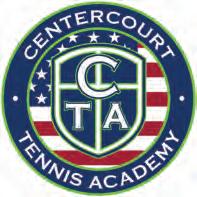
32 New York Tennis Magazine • March/April 2024 • NYTennisMag.com
2024 New York Tennis Magazine Camp Guide
Chris Lewit Tennis Academy
Manchester, Vermont l (914) 462-2912 l ChrisLewit.com l Chris@ChrisLewit.com

No Rainouts Ever! We have indoor courts onsite. Train seriously in the picturesque green mountains of Vermont!
Come train personally with elite coach Chris Lewit, who has recently developed several junior players to #1 nationally!
Chris Lewit Tennis Academy (CLTA) Summer Camp is a serious high performance sleepaway and day camp set in the natural paradise of Vermont. In addition to the summer program, Chris Lewit Tennis Academy also offers year-round training—with boarding—both short term and long term!
Players at CLTA have the opportunity to train personally in very small groups with Chris Lewit, one of leading high-performance junior development coaches in the United States. Chris is known as an expert in technique and biomechanics, and in Spanish training methods. Chris wrote the best-selling book, Secrets of Spanish Tennis, and he is currently pursuing an advanced degree in kinesiology and biomechanics. He has coached numerous top 10 nationally-ranked juniors—including several #1 ranked juniors in the US—many of whom are now graduating to the pro circuit. He also has extensive experience building the foundations of many young prodigies.
The camp focuses on players from ages 8-18, from serious beginner to national and ITF ranked players, and offers day or full boarding options. Campers live in a charming Vermont Inn and have exclusive use of a private tennis club, CLTA Vermont, which offers both outdoor red clay courts and indoor hard courts in the event of rain, gym, yoga studio and clubhouse, all set on 15 picturesque acres with a majestic river for swimming onsite, plus 35 acres of additional natural parkland.
The camp features daily morning yoga and mindfulness training from a certified master yoga instructor and an injury prevention program overseen by an NSCA certified strength and conditioning coach from NYC.
CLTA offers a unique hybrid teaching system based on the Toni Nadal, William Pato Álvarez, and Bruguera Methods from Spain, as well as other European influences based on Chris Lewit's travels abroad. Chris has spent the last 20 years studying with many of the legendary coaches in Spain and Europe. Recognized as a world-leading expert in Spanish systems, he is the only coach in the US certified in three distinct Spanish styles: Nadal, Bruguera, and Álvarez. Chris brings the most cuttingedge training methods from Europe back to the U.S. for his students.
CLTA summer camp features a new character building and mindset training based on the teachings of Toni Nadal!
All students receive personal coaching and mentoring directly from Chris Lewit, and are supported by his highly trained staff of top college and ATP players. This summer, the academy will host a full series of UTR tournaments onsite for campers every weekend!

CourtSense Tennis Training Center at Bogota Racquet Club
(home of the High Performance program)
156 West Main Street l Bogota, N.J. l (201) 366-2898
CourtSense at Tenafly Racquet Club
(Home of the Performance program)
195 County Rd. l Tenafly, N.J. l (201) 254-5836
Cour tSense.com l Info@CourtSense.com

With CourtSense, you’ll achieve your personal best, because our training is of the highest professional caliber and easily tailored to suit your age and skill level. We use tennis as a vehicle to teach life lessons by tapping into the spirit of every player, with lots of passion, expertise and character. Students have access to 17 outdoor and 16 indoor tennis courts, so regardless of the weather conditions the players are guaranteed their practice sessions..
33 NYTennisMag.com • March/April 2024 • New York Tennis Magazine
2024 New York Tennis Magazine Camp Guide
High Performance Summer Tennis Camp at Bogota Racquet Club. This camp is geared towards High Performance Tournament and high-level High School players for UTR level 4 and above and age group 11 and older. CourtSense has trained and is currently training players who have become ATP- and WTA-ranked players, U.S. Olympians, as well as many college scholarship athletes. CourtSense’s International High-Performance Coaches, in collaboration with the fitness staff and a sports psychologist, have developed a program that maximizes all athletes’ strengths, both on and off court.
l Full Day High Performance Tennis Camp at Bogota Racquet Club runs from Monday-Friday, June 24-Aug. 23 (nine weeks), featuring 10 hours of tennis training; 5 hours of fitness and 8 hours of match/point play) for players ages 11 and older, and UTR level 4.00 and above. Campers will have access to outdoor and indoor hard and clay courts, with a 3:1 student-to-coach ratio. Weekly dual matches with other academies, and mental toughness training are also included. Evaluation is required prior to enrollment. Transportation service between locations is provided.
l Full Day Performance Tennis Camp at Tenafly Racquet Club runs from Monday-Friday, June 26-Aug. 25 (nine weeks), featuring 8 hours of tennis training; 4 hours of fitness and 6-8 hours of match/point play) for players ages 8-12, and UTR level under 4.00. Campers will have access to a premier and very unique facility where they will be able to experience playing on all grand slam surfaces (European red clay, grass, hard court), with a 3:1 student-to-coach ratio. Mental toughness training is also included. Evaluation is required prior to enrollment.





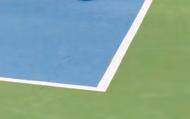


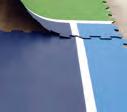

34 New York Tennis Magazine • March/April 2024 • NYTennisMag.com
FLEEX X PRO ndoorourts pickleballc )8787 (877-442- 4-HAR-TRU KLEBALL COURT •Consistent ball bounce •Excellent speed of play •Exceptional foot traction •Designed for added force reduction and energy restitution •Available in two sizes Installs inhours! Ready u e s b r oo dni com c e PER installa centers r F morrefoormancein eaboutperf u.com/pickleflexpro 877-4 ORMANCE PICK kle Flex Pro is a portable, table, high-performance p ickleball court that can p in as little as two hours. for temporary or permanent tion at clubs, convention s , and other facilities. Learn tr har
2024 New York Tennis Magazine Camp Guide
Ed Krass' 36th Annual College Tennis Exposure Camp® & Clinics
(813) 684-9031 l CollegeTennis.com
l USTA National Campus, Lake Nona, Fla.: Saturday-Sunday, June 1-2
l Massachusetts Instiute of Technology, Cambridge, M.A.: Saturday-Sunday, June 29-30
l Lehigh University, Bethlehem, Pa.: Saturday-Sunday, July 13-14
l Mercer County Park Tennis Center, Windsor, N.J.: Saturday-Sunday, July 20-21
l Wesleyan University, Middletown, C.T.: Saturday-Sunday, July 27-28
l Beerman Family Tennis Center, Lakeland, Fla.: Saturday-Sunday, December 7-8
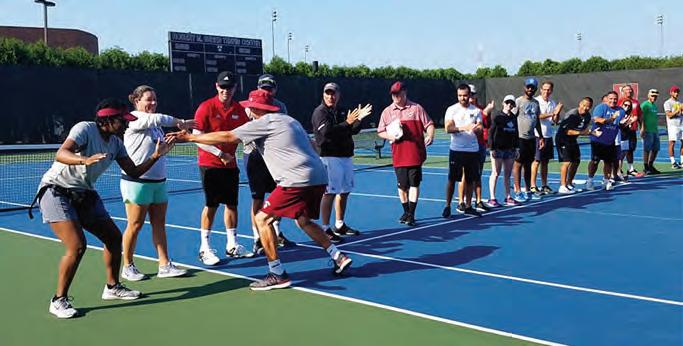
Coach Ed Krass' 36th Annual College Tennis Exposure Camp & Clinics, for ages 14-18, are taught exclusively by head college coaches who will work with you on-court to improve your singles and doubles match play strategies and provide college recruiting advice. Instructional drills and match play competitions will be conducted in the same style and intensity as a college team practice. Coach Krass' camps are still the world's only tennis camps taught exclusively by all head college coaches!
The two-day College Tennis Exposure Camp will be offered at the USTA National Campus in Lake Nona, Fla., Saturday-Sunday, June 12; Massachusetts Instiute of Technology, Cambridge, M.A.: Saturday-Sunday, June 29-30; Lehigh University, Bethlehem, Pa., Saturday-Saturday, July 13-14; Mercer County Park Tennis Center, Windsor, N.J., Saturday-Sunday, July 20-21; Wesleyan University, Middletown, CT; Saturday-Sunday, July 2728; University of Colorado, Lakeland, Fla., Saturday-Sunday, December 7-8.
Coach Ed Krass, Founder and Director of College Tennis Exposure Camp & Clinics, has coached varsity tennis teams at Harvard University, Clemson University and the University of Central Florida prior to founding the College Tennis Academy.
For more information, call Coach Krass at (813) 684-9031 or visit CollegeTennis.com. Look for more camp locations at CollegeTennis.com.
Evert Tennis Academy
10334 Diego Drive South l Boca Raton, Fla. l (561) 488-2001
Ever tAcademy.com l Evert@EvertAcademy.com
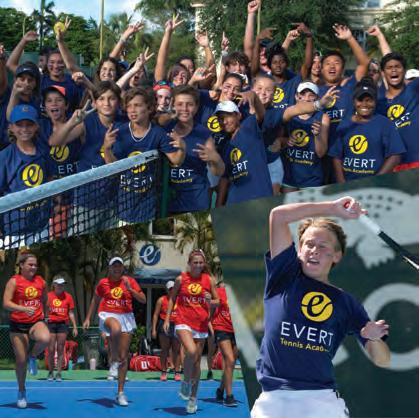

The Evert Tennis Academy is located in sunny Boca Raton, Fla., and is considered by many as one of the best tennis camps in the country. John and Chrissie Evert set out to continue their father’s legacy 22 years ago by installing core values: Excellence, Resilience, Integrity and Leadership. “Our core values are the roadmap to coaching every student-athlete towards reaching their full potential.”–John Evert
Evert Tennis Academy clinics will focus on technical development, tactical training and competitive settings. Players will experience a typical Evert program that includes tennis lessons, strength and fitness conditioning, mental conditioning and competitive match play against players from all over the world. Players will get a coach’s evaluation during their stay here to review at home.
Top four reasons why to attend this summer (Monday-Sunday, May 26Aug. 17):
1. Coaches/program: Our coaching staff continues to put a program together that is second to none. Each program is designed so that each player will get the personalized attention needed to improve his or her game while having fun. Whether you are an intermediate player looking to fine tune your game or a high-level
35 NYTennisMag.com • March/April 2024 • New York Tennis Magazine
2024 New York Tennis Magazine Camp Guide
nationally ranked player we have the program for you.
2. Facility/boarding: Evert Tennis Academy is one of the only academies to provide boarding services for any student wishing to stay only steps away from the courts. Its eight-acre facility provides a safe environment nestled in the beautiful and secure Mission Bay residential neighborhood, surrounded by lakes, manicured lawns and lush Floridian foliage.
3. Competition: The Evert Tennis Academy provides match play for each student every day and all levels are welcome. Although the tournament schedule is not yet confirmed, we normally host three UTR tournaments throughout the summer for any player looking to get match play prior to the Clay Court & Hard Court Nationals, Zonals or just get access to players of equal playing level.
4. Family Oriented and Personal: The Evert Tennis Academy in known worldwide for a family oriented atmosphere and a place where players enjoy both on-court training and off-court activities. Students that choose the Developmental Program will receive a tailor made personalized program that is second to none in the industry.
5. Location: Located in the beautiful town of Boca Raton, Fla., the Evert Tennis Academy is located only a few minutes away from the beach and only 30 minutes away from the Fort Lauderdale and West Palm Beach airports making it an easy trip from the northeast.
Extreme Tennis Academy
18900 NE 25th Ave. l Miami, Fla. 33180 l (786) 290-1546
ExtremeTennisAcademy.com

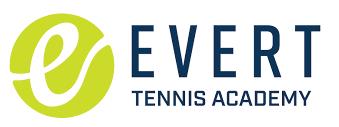
Extreme Tennis Academy Summer Camp 2024 is the best place for you to take your tennis game to the next level this summer!
Camps are available for kids eight-years-old and older. The High Performance Tennis Camp is run by Freddy Azucey and Carlos Maehama and their dedicated staff of top coaches.
Azucey is a PTR & Competitive Junior & Professional development coordinator, Dominican Republic Davis Cup, Former ATP/ITF Circuit Player who faced opponents such as Hernan Gumy & Wayne Ferreira among others, and helped develop Junior and Professional Players such as: Eddie Herr Winner Roy Lederman (USA) #1 National, Gabriela Paz (VEN) Top 10 ITF and US Open Junior Finalist, Adriana Perez (VEN) ITF 21, Sofia Melikishvili (GEO) WTA 250.
Maehama is an Academy Director, PTR International tester – former Japanese Junior team Traveling Coach & National Coach, USTA Junior Team Tennis Coordinator (North Miami Dade), and has helped develop numerous College and Junior players, as well as Finalist of French Open Mariano Puerta, PTR International Tester, is also fluent in Japanese, Spanish, and English. Housing is available for players traveling to the camp. Come train with the best tennis camp in South Florida! Visit ExtremeTennisAcademy.com for more information, see you on the courts!
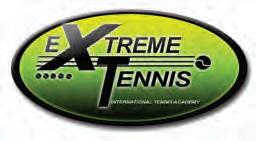
36 New York Tennis Magazine • March/April 2024 • NYTennisMag.com
2024 New York Tennis Magazine Camp Guide
Future Stars Summer Camps
(914) 273-8500 l FSCamps.com
l Purchase College SUNY
735 Anderson Hill Road Purchase, N.Y. (914) 273-8500
l The College at Old Westbury
223 Store Hill Road Old Westbury, N.Y. (516) 226-CAMP (2267)
l Farmingdale State College
2530 Broadhollow Road Farmingdale, N.Y. (631) 769-CAMP (2267)
l Future Stars Tennis Club
1370 Majors Path Southampton, N.Y. (631) 287-6707
l St. Joseph’s College-Patchogue
155 West Roe Boulevard Patchogue, N.Y. (631) 572-0232
l Aspatuck Tennis Club
25 Howell Lane, Westhampton Beach (631) 287-6707
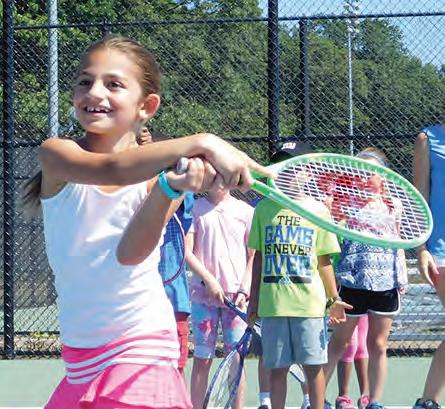
Future Stars Summer Camps offer the finest weekly tennis day camps at five outstanding locations: Purchase College SUNY, The College at Old Westbury, Farmingdale State College, St. Joseph’s College-Patchogue, Future Stars Tennis Club in Southampton, N.Y. and the Aspatuck Tennis Club in Westhampton Beach.
Programs are directed by experienced and qualified teachers and coaches who share a passion for working with children. Weekly programs are offered for boys and girls entering grades K-12.
Tennis camps offer the perfect mix of match play, drill work, strategy sessions and off-court activities to challenge players of all levels. The program is designed to improve every facet of the game, including technical, tactical, physical and mental components under the guidance of our experienced and enthusiastic tennis professionals.
Campers will be carefully grouped according to skill level and age and will be encouraged to enhance their strokes and strategies via group lessons, skill building drills organized play, target training, fitness routines and more.
At Future Stars Summer Camps, we play with confidence, enthusiasm and a genuine love of the game! Go to our website for more information and take advantage of enrollment savings. fscamps.com
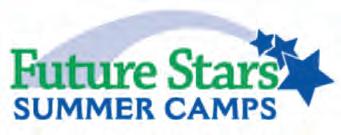
Gotham Tennis Academy Montauk Summer Tennis and Sports Camp
91 S. Fulton Street l Montauk, N.Y. (631) 267-8525 l www.GothamTennisMTK.com l Info@GothamTennisMTK.com
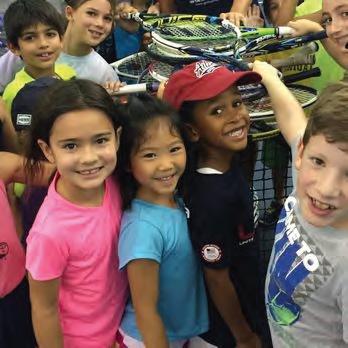
For over a decade, Gotham Tennis Academy has become known for innovative, world-class- tennis instruction in NYC and the Hamptons. Gotham Tennis – Montauk is on a beautiful nature preserve with eight pristine clay courts, just minutes from the center of Montauk and its world famous attractions and beaches. Beginners, rising stars, recreational players, and tournament players are all welcome.
Camp Hours: Weekdays from 10:00 am – 3:00 pm (Half Day Option : 10:00 am12:00 pm or 1:00 pm – 3:00 pm)
Campers are grouped according to age and level and can expect to improve fundamental tennis skills, self-confidence and conditioning and hopefully build on a lifelong love of the sport of tennis. One of our paramount goals throughout the summer is to build confidence and keep all campers active and motivated, so that they continue to learn at the fastest possible pace. Our camp staff with international backgrounds excels at teaching junior players of all levels. Your child can expect to
37 NYTennisMag.com • March/April 2024 • New York Tennis Magazine
2024 New York Tennis Magazine Camp Guide
not only improve tennis skills, but also life skills, such as discipline, the value of hard work, sportsmanship, independence and mental toughness.
Whether your child is a Beginner or Advanced level player, he or she will gain confidence and learn appropriate tennis fundamentals, strategy, match play, conditioning, and footwork, while having tons of fun during the camp sessions. And maybe most important of all, your child is sure to develop memories and relationships that will last a lifetime!
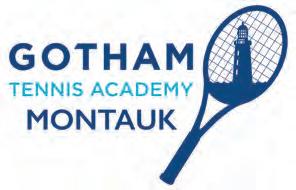
Gotham Stadium NYC Summer Camps at Mill Pond Park
Minutes From Manhattan Next to Yankee Stadium
(718) 665-4684 l www.StadiumTennisNYC.com l Reservations@StadiumTennisNYC.com

Stadium Tennis Center offers a unique array of summer camp programs designed for tennis players of all levels to experience. Through our partnership with Gotham Tennis Academy, a leading operator of innovative tennis programs and camps in NYC and the Hamptons, some of the most talented and engaging tennis pros in New York City have been assembled. Our pros share a passion to work closely with players of all levels and ages to help them develop to their fullest potential.
Gotham Stadium Red and Orange Ball Junior Summer Tennis Development Program (Ages 5-10)
Designed for beginner, intermediate and advanced players. A great way to keep your child active and improve his or her tennis in a fun and supportive environment. The camp is designed to take your child to the next level towards tennis proficiency in our fun and supportive environment. Certified tennis instructors with international backgrounds excel at teaching junior players at this formative stage of development. Your child will not only have lots of fun, but also gain confidence, learn appropriate tennis fundamentals and make new friends.
Gotham Stadium Summer Elite Yellow Ball High Performance Tennis Academy (Ages
7-15):
Designed for those juniors who aspire to become more competitive tournament players and prepare them for more competition and advanced play. On-court drills, match play, conditioning and mental toughness training fitness will prepare your child for the next level of advanced play. If your child is ready to reach for new heights on the tennis court, then you owe it to yourself to experience high performance summer training at the Stadium Tennis Center. Your child will learn proper stroke production fundamentals, strategy, match play, conditioning and footwork.
We have a flexible enrollment policy with full and half day options all summer long. Round-trip door-to-door transportation from points in New York City, Westchester and New Jersey may be arranged.
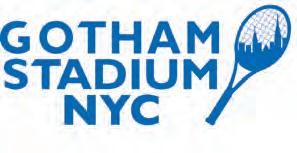
38 New York Tennis Magazine • March/April 2024 • NYTennisMag.com
2024 New York Tennis Magazine Camp Guide
John McEnroe Tennis Academy Summer Tennis Training Camps
Locations on Long Island including the Hamptons, in Manhattan and Westchester:
JMTA New York City l SPORTIME Randall’s Island l (212) 427-6150
JMTA Long Island l SPORTIME Syosset l (516) 364-2727
JMTA Long Island l SPORTIME Port Washington l (516) 883-6425
JMTA Hamptons l SPORTIME Amagansett l (631) 267-3460
JMTA Westchester l SPORTIME Lake Isle l (914) 777-5151
CampsNYC@Spor timeNY.com l SportimeCamps.com/JMTA
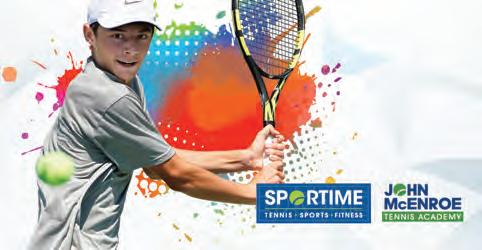
No one knows junior tennis training better than SPORTIME! And, with multiple tennis camp locations across Long Island, including in the Hamptons, and in New York City and Westchester, aspiring tennis players can enjoy John McEnroe Tennis Academy and SPORTIME tennis training programs throughout the region, this summer.
SPORTIME’s and JMTA’s innovative tennis training approach is rooted in competitive games, underpinned by technical development and tennis-focused athletic training. We present tennis so that players quickly develop an understanding of winning tactics and learn skills that help them achieve their goals, all in age and level based groups. More experienced juniors receive enhanced training to prepare them for the physical, mental and emotional demands of match and tournament play. SPORTIME’s international coaching staff is dedicated to turning weaknesses into strengths and strengths into winning games.
Our younger players work through clearly defined stages of development that make it possible for kids to play tennis from the moment they step onto the court. With our unique “gamification” approach, junior players don’t just take lessons—they go on missions, acquire skills, collect points and achieve milestones. Campers also enjoy instruction and competition in a variety of team sports activities that help to enhance their coordination and athletic skills.
Visit SportimeCamps.com to find the SPORTIME EXCEL or JMTA Summer Tennis Training Camp nearest you, or e-mail Camps@SportimeNY.com to find out more. Programs vary by location.
MatchPoint NYC
2781 Shell Road l Brooklyn, N.Y. l (718) 769-0001
MatchPointComplex@gmail.com l MatchPoint.NYC/Camp
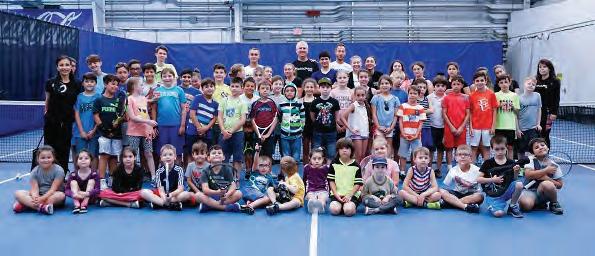

The most immersive, joyful, and thrilling Summer sports experience in Brooklyn is back this summer at MatchPoint NYC! We are excited to make our club your child’s second home this summer, as well as to help them make new friends & develop long-lasting friendships with other participants.
Our Tennis, Swimming, & Rhythmic Gymnastics FullDay Programs help young athletes learn, excel, and master the sports they’re devoted to. For those who are not devoted to a single sport, we offer a Multi-Sport FullDay Program, that introduces kids to a wide range of sports, including tennis, soccer, basketball, boxing, swimming, and more!
Each Full-Day Summer Program is run & coordinated by professional, certified coaches who are devoted to the safety and athletic development of each participant. Each program includes drills, match play, and fitness sessions, along with healthy lunches served each day. Snacks & plenty of water are also provided keep our athletes energized to play their
39 NYTennisMag.com • March/April 2024 • New York Tennis Magazine
favorite sports.
2024 New York Tennis Magazine Camp Guide
MatchPoint NYC is the sports and fitness destination for the entire family. It is located in Brooklyn – just 20 minutes away from downtown Manhattan. Spread across 120,000-square feet, MatchPoint NYC’s premier health and fitness complex features a cutting-edge tennis facility that includes eight gorgeous indoor tennis courts.
Additional features include full-sized gyms for weight lifting, cardio, and CrossFit training, three group fitness studios, a Junior Olympic pool, a rhythmic gymnastics center, a basketball court, yoga studio, and a variety of youth & adult competitive & recreational training programs.
For more information about MatchPoint NYC and its Full-Day Summer Programs, visit matchpoint.nyc/summer-camp or call (718) 769-0001.
Let us help you find your game. Sign up today!

Ross School Tennis Center and Ross Summer Camp
20 Goodfriend Drive l East Hampton, NY l 631-907-5162 ross.org/tennis l tennisacademy@ross.org
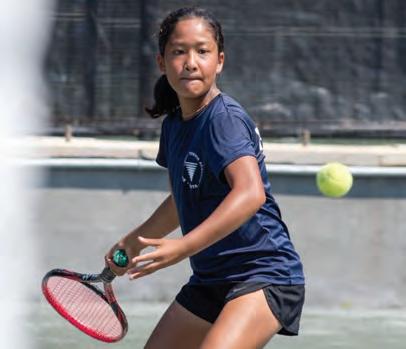
Ross School Tennis Center (RSTC) is a beautiful tennis facility in the Hamptons that is open to the public and located on the Ross Upper School campus in East Hampton, NY. The tennis center features six Har-Tru courts that are enclosed by a bubble from mid-fall through mid-spring, allowing for year-round play. There are also two hard courts for junior tournament training. The courts are directly adjacent to a state-of-the-art Field House, featuring amenities such as locker rooms, lounge, snack bar, and pingpong tables. The staff here provides a fun and supportive atmosphere that allows for the greatest amount of success.
Summer Tennis Training
Monday–Friday, June 24–August 16: From specialized U10 programs with orange and green dot balls designed for developing competitive tennis players to our high-performance training with live ball drills and match play series, this 8-week all-encompassing summer program is our most intense and complete junior tennis education offered.
Players considering this program should be serious about their commitment to tennis, consistently practicing at least two days per week year-round. All training in each age and development level includes daily fitness and match play components.
Ross Summer is pleased to welcome legendary tennis coach Larri Passos back to Ross to work on-site with players this summer. Players can sign up for this program weekly, but space is limited. Tryouts are required (videos accepted). Visit ross.org/summer for more information.
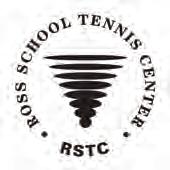
40 New York Tennis Magazine • March/April 2024 • NYTennisMag.com
2024 New York Tennis Magazine Camp Guide
SPORTIME Summer Tennis & Sports Camps and John McEnroe Tennis Academy Training Camps
Locations across Long Island, in Manhattan and Westchester and in Schenectady:
SPORTIME Amagansett/JMTA Hamptons l (631) 267-1038
SPORTIME Bethpage l (516) 933-8500
SPORTIME Hempstead Lake l (516) 282-7222
SPORTIME Kings Park l (631) 269-6300
SPORTIME Lake Isle/JMTA Westchester l (914) 777-5151
SPORTIME Lynbrook l (516) 887-1330
SPORTIME Port Washington/JMTA Long Island l (516) 883-6425
SPORTIME Quogue l (631) 653-6767
SPORTIME Randall’s Island/JMTA New York City l (212) 427-6150
SPORTIME Roslyn l (516) 484-9222
SPORTIME Schenectady l (518) 356-0100
SPORTIME Syosset/JMTA Long Island l (516) 364-2727
SPORTIME Harbor Island Westchester l (914) 777-5050
EHSC@SPORTIME Amagansett l (631) 267-2267
SPORTIME Volleyball Camps l (515) 731-4432
Camps@SportimeNY.com l SportimeCamps.com
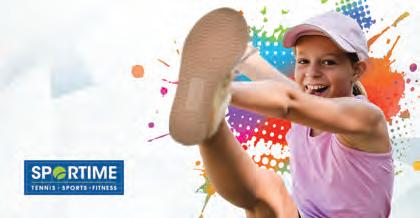
“Last year, I had the best summer ever!” Who said that? Every kid who attended a SPORTIME Summer Camp last summer! That’s because at SPORTIME summer camps, our staff of teachers, coaches and counselors makes sure that every camper has a positive and memorable experience. SPORTIME knows how to make camp fun and safe!
How does SPORTIME do it? Our experienced, enthusiastic and caring staff members are skilled at providing camp programming that is challenging, innovative and educational, all at facilities that are state-of-the-art, safe, and easily accessible.
From preschoolers to pre-teens, kids who enjoy tennis, sports, friendship and fun love coming to SPORTIME summer camps. With camp programs tailored to every age group, at locations across Long Island, including in the Hamptons, and in New York City and Westchester, we’ve got your summer covered! Go to SportimeCamps.com to find the perfect camp for your child, or e-mail us at Camps@SportimeNY.com for personal assistance. We are here to help! Programs and facilities vary by location.

USTA Billie Jean King National Tennis Center
Flushing Meadow-Corona Park l Flushing, N.Y. l (718) 760-6200 l NTC.USTA.com
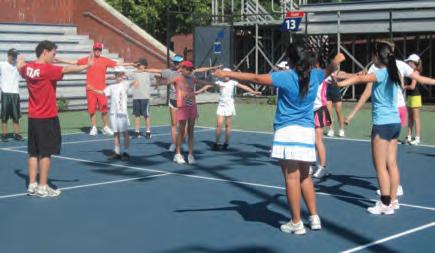
The USTA Billie Jean National Tennis Center will once again offer funin-the-sun tennis day camps starting in June. Enrollment will soon be available online for the weekly programs:
Please note that the camp will be held both indoors and outdoors this summer.
June 2024 - August 2024
We offer summer camps for all ages and levels from 10 and under tennis to recreational juniors to high-performance players. Space may be limited so register early.
The weekly full-day program runs Mondays through Fridays, 8:30 a.m.-4:00 p.m., with a one-hour lunch break or a twilight session from 4:30 p.m.-7:00 p.m. Campers work on the development of tennis techniques, tactics, sports conditioning, multi-sports, and strategy geared toward maximizing the learning experience in a fun presentation.
As the juniors develop, they are advanced to more challenging groups. Tennis activities include Stroke of the Day, team
41 NYTennisMag.com • March/April 2024 • New York Tennis Magazine
2024 New York Tennis Magazine Camp Guide
games, and competitive match play.
The camp also offers cross-training activities, such as soccer, softball, and basketball and other multisport training activities. Along with many fun activities on the grounds of the USTA Billie Jean King National Tennis Center, we also offer on site spirit days, talent contests and other on site activities designed for camper involvement and team building. The program accepts junior players, ages four- through 10-years-old for the 10 & Under programs.
Recreational players 11-years-old and up are enrolled in the Junior Camps (8:30 a.m.-4:00 p.m. or 4:30 p.m.-7:00 p.m.). Advanced High-Performance Tournament training campers will also be invited to participate in an intensive Tennis Academy training program.
The National Tennis Center has 18 outdoor courts, 12 indoor courts, and four stadium courts. Also on-site are pingpong tables, ball machines, a fitness center, and other age-appropriate fun activities like arts, multi-sports, arts and crafts, and other engaging sporting events. The primary focus will be on developing tennis skills while offering other activities to enhance the learning and summer camp experience. Also offered are junior evening and weekend programs, as well as adult daytime, weekday evening, and weekend camps. Subject to change.
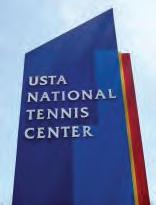


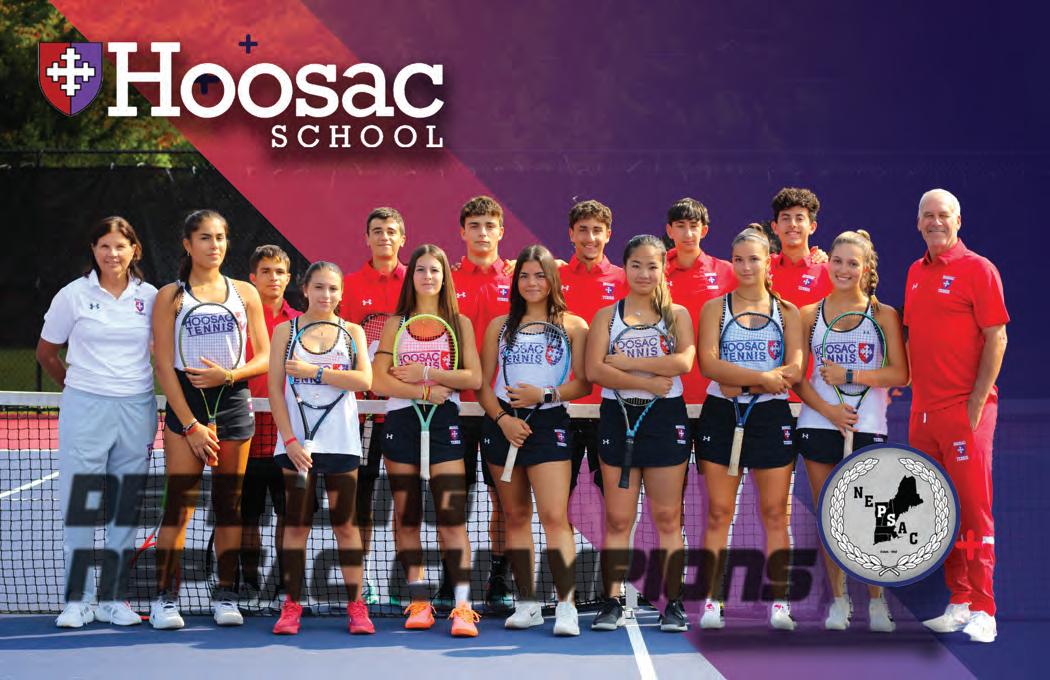





42 New York Tennis Magazine • March/April 2024 • NYTennisMag.com
Whole Human Athlete
The Secret to Being Your Best
By Rob Polishook
What’sthe secret to being your best? How do the top pros sustain their performance tournament after tournament? Clearly, this is an important question, one worth exploring and trying to understand. With this knowledge, we could greatly improve our individual performance, coaches could better guide their students, and parents could help their kids.
As a mental training coach, I have front row seats to the challenges, adversity and obstacles that tennis players face at all levels from juniors to professionals. Many people think that if a player works harder, push’s stronger, and focuses on the prize with more intensity that that will be enough. Certainly, these elements are important, even vital. However, this doesn’t take into account the whole picture.
The mental side must be part of the equation, without it, there is an imbalance. For peak, sustained and repeatable performance, an athlete must commit to their game, focus on what they can control and bring who they are to what they do, among other things. From this place they can approach a tournament from a grounded, centered and balanced place. They can bring their personal heart, energy and spirit to the competition. Only from this place will they have the capacity to manage challenges, obstacles, adversity, pressure and the natural ups and downs in a match.
Remember a time when you watched a player who got nervous, tight, or seemingly just froze during competition. You know that “deer in the headlights” look? We wonder how this
can happen especially when the athlete has been in this situation before or performed the shot hundreds of times in practice? In fact, if we are honest with ourselves, many of us have been in that situation one time or another.
What is usually holding an athlete back is not what’s on the outside. It’s not the part that everyone can see: the athletic talents, skills and technique. Certainly, these skills can always be improved upon. However, the key is to look at the whole person, the whole human athlete. We always need to look at what’s on the inside, what’s happening below the surface of the player. Competitors are not robots, what’s on the inside affects how we play on the outside- it’s one and the same.
Sometimes issues that get in the way of performance might be: confidence, focusing on the result, worrying about what others think, or ranking pressures. Other times it might be something that is not tennis related but the player carries onto the court such as a bad test result in school, an argument with a friend, family problems, fear of a reoccurring injury, or a combination of some of these stressors. No matter what the issues, carrying this weight on your shoulders will negatively impact performance every time!
When an athlete, coach or parent doesn’t understand the synergy between the person and the athlete? There is a disconnect; they are not taking into account the multifaceted whole human athlete. Usually, it’s a fast track to performance blocks, anxiety and burnout. The player becomes unable to get the most of
themselves because they are pushing and pulling so hard that they never step back to be patient, piece things together, and reset to allow their skills to show through.
As players, coaches, and parents we must look at the whole human athlete, not solely the performer or performance in front of us. We must refocus through the lens of the athlete within the person. From this lens, we immediately see a wider perspective to what’s happening and also additional attributes which make the player unique. We see their all-important heart energy and spirit. This expanded visibility allows the athlete to utilize more tools during their performance, and for coaches, parents and fans to see the whole picture, what the player is experiencing on the inside and outside both on and off the court.
When an athlete competes, they are more than just a tennis player. Their unique energy, distinctive spirit and authentic heart are what make them the player they are. This is the foundation of any athlete’s greatness. We all have our own DNA and wiring. The key is tapping into this uniqueness, not assimilating to a one-size-fits-all mentality.
Rafael Nadal said, “Tennis isn’t who I am, it’s what I do.” His greatness starts with the person (heart, energy and spirit) and then transcends to the player (talent, skills, technique) and then the performance. The next time you compete or watch the greats remember you are a whole human athlete. Your success lies in not only bringing your talent, technique and skills but also your heart, energy and spirit. Play your game, be yourself, it’s what makes you, you!
43 NYTennisMag.com • March/April 2024 • New York Tennis Magazine
2024 NYC Boys’ High School PREVIEW
The spring is almost here and that means a new season of high school tennis in New York City is around the corner. Teams from all across the City are eager to begin a new season of competition as they pursue a PSAL title.
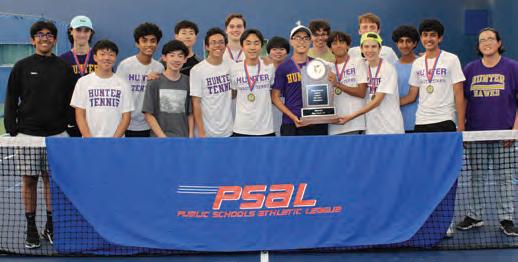
Last year, Hunter won the “A” division title for the second consecutive season as it defeated Beacon to defend its crown, and in the “B” division, Bard upended Curtis to win the city championship. Both teams will be out to defend their respective titles this spring.
New York Tennis Magazine examined both of those teams as well as more teams and players to watch for the 2024 Spring in the PSAL. *all players are subject to change
Teams to Watch
Hunter

In search of a three-peat, the Hunter Hawks will rely on its depth and experience from the past two seasons in order to do so. It will have to make up for the loss of last year’s first singles player Rahul Vasudev and Weston White, who played first doubles, but will lean on junior Neel Mathur and Kyler Swiatocha to carry the weight in singles play. Nikita Staniloae played first doubles a year ago but could move into the singles lineup this season to give Hunter a top-tier trio, while players like Jeffrey Tsai and Christopher Lee help provide doubles support as the Hawks seek continued dominance.
Beacon
It was a heartbreaking finish to the season for Beacon last spring, coming up just short of a city title, and they will be out to return to that stage of the playoffs and this time come
out on top. Beacon has been a mainstay at the top of New York City tennis for years, and will rely on that consistent depth it has had over the years to succeed again this season. The Blue Demons lose first singles player Erik Johansson, second singles player Soren Rudin Aulenbach and Jordan Klein at first doubles to graduation, but still have plenty of talent to make up for it. Arjun Agostinho will step into a bigger role in singles play in his senior season, and Beacon still has experienced players such as Nash Zakashansky, Sandro Buskhrikidze and Barrett Davis to help fortify its lineup.
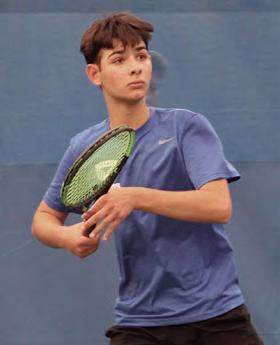
McKee/Staten Island Tech
The top team from out in Staten Island was one victory away from competing for the PSAL NYC title in 2023, and with much of its lineup returning this spring, the Seagulls should be a threat once again. Leading the way will be Jeffrey Safir, who had a fantastic sophomore campaign and will look to build on that in his senior year. Derrick Chen, who played second singles a year ago, has graduated, but Staten Island Tech still has junior Jesse Kipnis in the singles lineup, as well as Michael Olsen, Daniel Lim and more who will help lead it deep into the City playoffs.
Stuyvesant
Stuyvesant could be one of the most intriguing teams in the PSAL “A” Division this spring. The Hitmen possess a formidable singles trio at the top of its lineup that makes it a difficult opponent for any team in the City. Atop that lineup will be retiring first singles player Stanley Hoo, who won both of his matches in the playoffs a year ago to help lead Stuyvesant to the quarterfinals, where it fell to eventual champions Hunter. Behind Hoo is junior James Xu and senior Joshua Finkelstein at second and third singles, respectively. Stuyvesant will have to make up for the loss of first doubles duo Alexander Hagiu and Angier Lei, but with talented young players like junior Nicholas Oh and sophomore Shangxing Chen, who got experience last spring playing together at second doubles, Stuyvesant could be a dangerous team.
44 New York Tennis Magazine • March/April 2024 • NYTennisMag.com
Bard
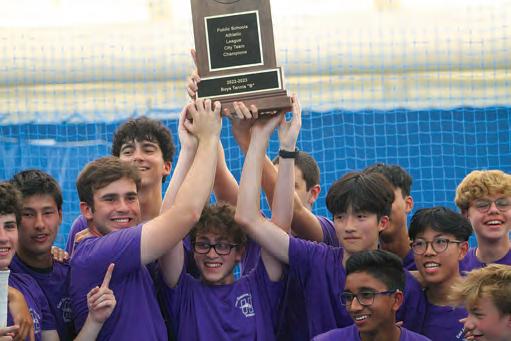
Last spring, Bard went undefeated and captured the City’s “B” division championship, marking one of the best seasons in program history. The Hawks are aiming to defend their title with a hungry group of players eager to prove last season was not a fluke. Richard Lee will lead the way at first singles as he aims to have a great senior season, while the first doubles pairing of Eli Gordon and Luther Stevens have similar goals as they get ready to begin their senior season. While Bard loses its second and third singles players from last year, in Noah Feig and Curtis Pakgross, respectively, they have a deep roster,



which includes last year’s second doubles duo of Matteo Weiss and Michah Killmer, which will help it make a push for a second straight city title.
Bronx Science
A quarterfinalist last season, Bronx Science has high expectations going into this spring, and for good reason. While it loses first singles player Sebastian Rosero Mayer to graduation, Colin Hui returns for his senior season and will help lead the Wolverines atop the singles lineup. Sungjin Yun will help bolster that singles lineup as well, as he played third singles a year ago and should step into a bigger role. The first doubles duo of Leif Emery and Henry Bardey, a sophomore-junior pairing, bring their experience to lead the way in doubles play. With its depth and experience, look for Bronx Science to go further in the City playoffs this time around.
Additional Players to Watch
• Oliver Foronda, Brooklyn Tech
• Ethan Kaminsky, Curtis
• Max Kremsenko, Fort Hamilton
• Matthew Lau , Newcomers
• Joshua Bey, Frederick Douglass
• Bedanga Gautam, Manhattan Science & Math
• Ihsan Ahmed, Thomas Edison
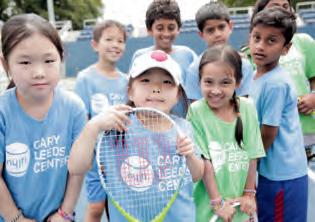
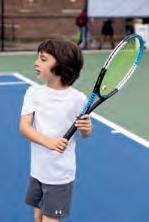






45 NYTennisMag.com • March/April 2024 • New York Tennis Magazine
Five Essential Tips for Adult Tennis Fitness:
A Guide to Injury Prevention and Lifelong Playing
By Diego Largacha
Tennis
is a sport that demands a unique blend of physical attributes, including speed, power, endurance, strength, balance, and specific playing skills. Both competitive and social players need to understand that undertaking a tennis-specific conditioning and training program to meet the demands of play and reduce the risk of injury. Here are five essential tips for adult tennis players to better train to help prevent injuries and promote lifelong playing.
1. Warm Up and Stretch
The importance of warming up and stretching cannot be overstated. Cold muscles are more prone to injury and reduce performance on the court. Therefore, before you step onto the court, take at least 10-15 minutes to warm up your body and stretch your muscles. This can include light jogging, jumping jacks, or cycling, followed by dynamic stretches that mimic the movements you’ll be making during the game. This will increase your heart rate, improve blood flow to
your muscles, and enhance your performance on the court. Some of us need these 10-15 minutes to wake up and get our minds off of work, kids, or life in general and engage that mindbody connection to focus of tennis.
2. Proper Equipment

Investing in proper equipment is crucial for preventing injuries. Tennis shoes with good support can help prevent ankle injuries. For added support, consider wearing two pairs of socks or specially padded tennis socks. We test all our professional
athletes’ shoes to make sure that their shoes are helping them play and not hurting them. The right racket is also important. A racket that is too heavy can strain your arm, while one that is too light may not provide enough power. Our tennis coaches and in-house racket expert can help you to find the equipment that suits your level, style, and physique.
3. Focus on Technique
As we get older our capacity to move optimally for our shots decreases leading to aches, pains, and injuries. Often times we will do our Magnus Sports Science Evaluation with adult players, and they do not realize that they have limited range-of-motion in a hip from sitting all day at work or that poor posture effects the way their spine rotates on their backswing. Tennis coaches unknowingly ask for something that the player does not have the capacity to do. That is where your tennis-specific fitness trainer can build your capacity to mobilize through proper tennis stroke techniques. I
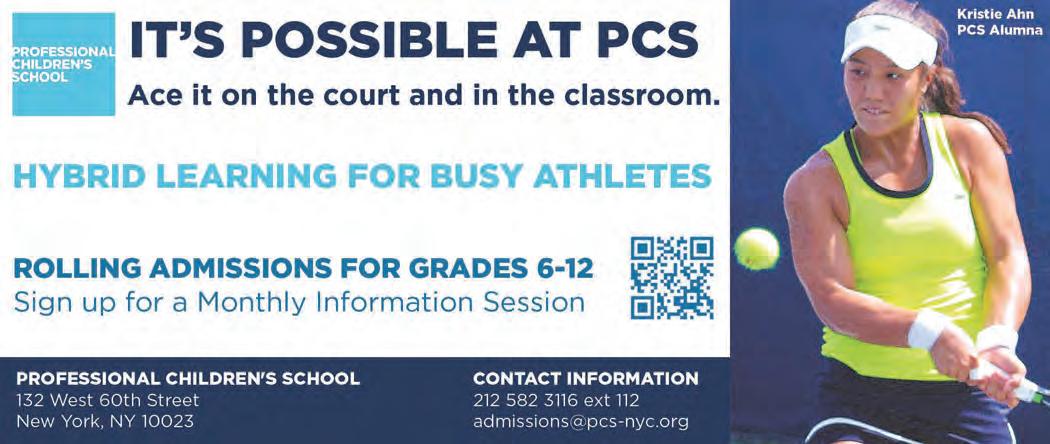

46 New York Tennis Magazine • March/April 2024 • NYTennisMag.com
commonly hear when serving or hitting an overhead, avoid arching your back unnecessarily. Instead, bend your knees and raise your heels, so your upper body weight is evenly balanced. This technique not only improves your shot but also reduces the risk of back injuries. This is assuming you can stabilize your core. What if you have core dysfunction from a C-Section, old back injury, or hernia? You have to train your core out of dysfunction and develop the coordination to engage those core muscles during specific core exercises for those tennis shots.
It’s also important to follow through on your strokes to prevent abrupt, jarring stops that can lead to elbow and shoulder injuries. It is so common that adult players do not transfer energy through the kinetic chain to the fascia and large muscles to slow down the forces of your shot. Simple tennisspecific exercises can help you better understand and feel the energy transfer before you step onto the court. This helps both your performance and to reduce those common tennis injuries that lead to you being out of the game.
4. Strength Training
Tennis-Specific Strength training is a key component of your tennis fitness. Maintenance of our muscle mass is a
key to lifelong tennis. Most machinebased exercises do not transfer to tennis because if you played tennis or other overhead sports in your childhood then your body, your bones, have adapted by bending into external rotation (humeral retroversion) or internal rotation (femoral anteversion). Exercises like single leg squats, single leg calf raises, single leg Romanian deadlifts (especially on an unstable surface), single arm shoulder presses, single arm lateral raises, lateral lunges, single arm bent over rows, and other prevention exercises can be more beneficial than traditional machinebased training. These exercises strengthen the muscles you use most during tennis, improving your power and endurance on the court. Additionally, when done in this single leg or single arm fashion, you are not creating wear and tear on your joints by forcing the motion through the normal range of motion when your joints are structurally different. This is why we always start

our Adult Players with a thorough evaluation.
5. Rest and Recovery
Rest and recovery are just as important as training. We love to use sleep trackers like Whoop or Oura to see just how stressed your body is from life and training for tennis. Working with the right volume and intensity with heart rate monitors, combined with adequate recovery (at least one day off a week from any physical training), will give adult players every opportunity to improve and minimize the risk of any tennis training injuries. Listen to your body and give it the rest it needs. This will help you stay injury-free and enjoy the game for many years to come.
In conclusion, tennis is a wonderful sport that can be enjoyed by adults of all ages. By following these five tips, you can improve your fitness, prevent injuries, and enjoy lifelong playing.

Remember, the key to success in tennis is a combination of skill, strategy, and physical fitness. So, get out there, enjoy the game, and stay healthy!
Diego Largach is a Level 3 Fitness Coach with Magnus Sports Performance at CourtSense Tennis Training Center. Largach, an ATP Level Fitness Coach from Colombia, has been shaping elite tennis players since 2008. He studied at the Colombian National Sports School and served as the Fitness Director at Academia Advance Tennis Sport Club Cali. He worked with Team Regional Valle del Cauca in 2014 and took regional players on the ATP tour in 2017. In 2020, he became the director of fitness for Liga Vallecaucana de Tenis and traveled with ATP Player Nicolas Barrientos to the 2022 US Open. Diego’s work on developing speed, power, and footwork on clay courts was featured in Tennis On-Demand.
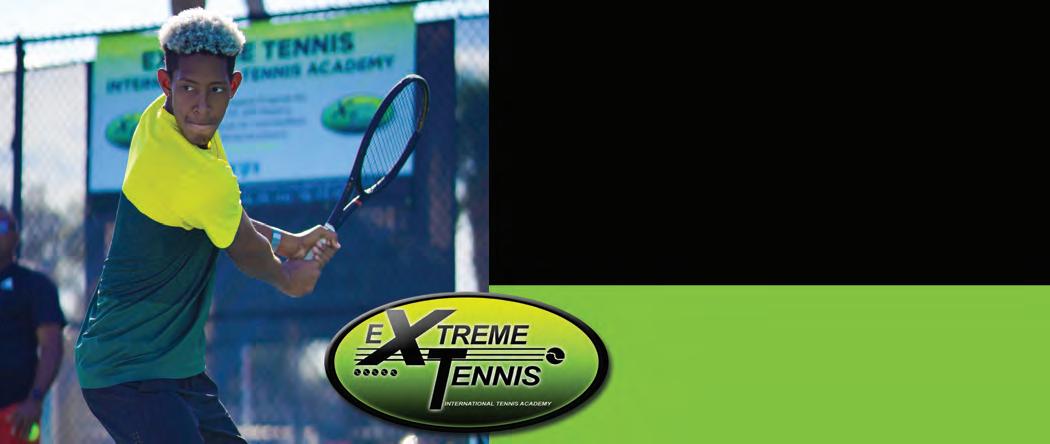
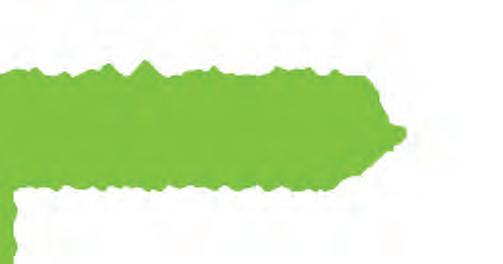

47 NYTennisMag.com • March/April 2024 • New York Tennis Magazine
The Zone And How To Get There
By Dr. Tom Ferraro
Everyathlete wants to play “in the zone”, but this state of mind rarely occurs. All athletes are familiar with the term, “the zone”, that calm, energized, protected state of mind that screens out all distractions. Long-distance runners and swimmers regularly enter the zone since their sport is so solitary and has relatively few external distractions.
In psychological terms, getting into the zone is a sign that the player is able to dissociate and temporarily establish a new identity. Dissociation is a psychological defense that is usually acquired in youth and is based upon having a history of abuse coupled with a higher than average IQ. Dissociation is defined as the ability to temporarily, but drastically, modify one’s identity to avoid anxiety, pain or feelings of helplessness. We can’t provide a young player with a history of abuse so we are left with the challenge of helping the tennis player establish this kind of defense just before they play and also during the match. I will take you through a step-by-step
process which will explain the way I do this with players.
Every athlete deals with anxiety differently, and this is based upon their identity, self-image and their defenses, so a unique intervention is needed for each player in order to get them into the zone. George Kelly’s pioneering work on personality development helps in this effort because he was one of the first behavior modifiers to suggest that we have a choice as to how we behave and feel. His work suggested that if you act confidently, that will help you to become more confident. Essentially, you can fake it till you make it.
There are three types of identities that work well in tennis. Some players feel they need to be quiet and focused, some feel they ought to be aggressive and dominant and others feel they would benefit by being cheerful and kind to their opponent. I usually leave it up to the player to decide which works best for them, based upon their previous playing history. I discuss in detail behaviors related to each character type and we
rehearse this in the office by role modeling each. Each type of identity can be used to help the player to deal with their anxiety. Here is how we do it with each type of identity:
The Quiet One: Bjorn Borg was this character type. He was silent, quiet and non-disruptive. He did not relate to his opponent and he did not want to. For the player who picked the “quiet, more focused identity”, I teach them ways to be silent, nonverbal and non-interactive with the opponent during the entire match. With silence, the player learns to stay focused. Giving your opponent the silent treatment is very effective, and this type of behavior is what we call passive aggressive in psychoanalysis. The player is told to adopt this identity before they get on the court and to remain this way for the entire match. They are instructed to remain silent and not to talk to their opponent the entire match. This treatment was first designed by Pia Nillsen, the famous Swedish sport psychologist, who taught Annika Sorenstam how to dominate on the
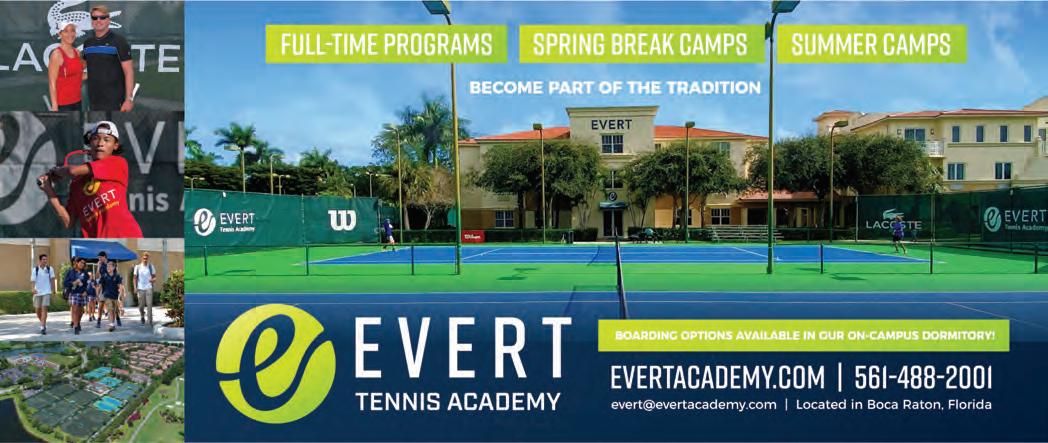

48 New York Tennis Magazine • March/April 2024 • NYTennisMag.com
LPGA tour. When the player commits to this identity and behavior and sticks to it during the match, they enter a dissociated state and thus are in the zone.
The Alpha: This kind of identity is seen in players like John McEnroe, who was not afraid to shout and scream. McEnroe would sneer, yell and scream at anyone who crossed him and this kind of behavior not only allowed him to ventilate his rage, but also enabled him to suppress his anxiety with aggression. This type of behavior is referred to as identification with the aggressor and although one does not want to be too aggressive, it is always good to be assertive when you are being wronged. This is very useful in youth tennis when games are often won or lost due to one player making bad calls. To dissociate into this kind of personality does not mean you must yell or scream, but it does mean you need to feel tough and use that
attitude to win.
The Friendly Player: This type of identity can be used to relax you and help you enjoy the game of tennis, no matter what the stakes. Some athletes feel this is a good attitude to bring onto the court because it helps them to be more free and at peace. It also disarms the opponent and shows that you are confident. Joking and fooling around on court is sometimes seen in tennis by Novak ‘The Djoker’ Djokovic and he is a good role model for some players.
The key to all of these temporary tennis identities is to commit to them while playing. The full commitment to a new way of being and acting is the

way dissociation works and it leads you into the zone. Anxiety is always the great disrupter in your game and adopting a whole new identity as you play is a very good way to approach this issue. You can pick any of the above identities and try it on as you would a uniform or a suit of armor. To get into the zone you need to have a strong defense and one of the best ways to do this is to pick a role model and emulate them. Contrary to what Charles Barkley once said athletes are role models.
To find out more about how to enter the zone by forming a new identity give me a call any time at (516) 248-7189 or visit my website at drtomferraro.com.
For consultations, treatment or on-site visits, contact Dr. Tom Ferraro Ph.D., Sport Psychologist, by phone at (516) 248-7189, e-mail DrTFerraro@aol.com or visit DrTomFerraro.com.











T C J f In a kin g! The M In ham p ion s e nn is .vels s and le f all age or kids o programs talvelopmen tional and de nstruc Junior T tage Sign Up Now! ecamps t At Play A 49 NYTennisMag.com • March/April 2024 • New York Tennis Magazine
What Tennis Players and Coaches Can Learn From Other Sports
Whybother examining other sports like football, golf or baseball to understand tennis better?
I see two clear cut reasons. First, in many other sports, specific and relatable mechanics have been examined, broken down and explained well, sometimes better than what's been offered in tennis.
Next, other sports are recognizable for those who have played or even watched them. So we can look at how a quarterback throws a football to better understand the upward arm thrust of service mechanics. We can also examine how a golfer "slices" to create a ball that "fades" or "hooks" to create a ball that "draws" and we can adapt such techniques to create an off-vertical axis tennis stroke.
Do these sports offer perfect analogies to tennis movements? No, perhaps not, but they can be illuminating and offer valuable insight. In this article, I will focus on how a hitter in baseball hitter creates a movement similar to a tennis backhand.
Let's start by talking about the "lag" or the tendency for the racket head to remain behind the handle at the end of the take back. Many call this movement "natural" however what baseball hitters know is that such a lag can be vastly improved by the use of one simple technique, one that was used by all-time hits leader Pete Rose years ago as it is used by Novak Djokovic today.
If you watch carefully, you can see Djokovic collapse his left arm ever so slightly as he nears the end of his take back. This causes the handle of the racket to push away from his body. The slight straightening of his left arm as he approaches the ball for contact brings the handle nearer to his body. This subtle movement in baseball and tennis creates the "lag"
By Steve Kaplan
and such a movement is well documented in many analysis of baseball swings as well as being demonstrated in many tennis videos.
We can further compare Rose's swing to Djokovic’s backhand by looking at their similar stances. Both start in a conventional athletic stance with knees slightly wider than hips, and feet slightly wider than knees, and as the swing progresses both reposition their right front foot forward and plant their toe sideways alighted with crest of their illium so that they have a strong base to push. Their hands stay to the inside of the ball with their hips just a little restrained which helps to keep their hands steady against unwanted movement. If you look at Rose, you will see that his torso moves at a steady progression through impact. It's no surprise then that he was perhaps the best contact hitter in baseball history with consistency in movement that was prioritized over power. Keep in mind that since his torso moved at a steady rate rather than stopping suddenly, it was smooth, reliable and predictable but did not transfer maximum power. Notice that Djokovic creates the same steady torso movement on his backhand which might help explain why his backhand is perhaps the most reliable stroke in tennis history. Of course, he can demonstrate power but it is more the result of his clean contact that transfers incoming

energy with high efficiency rather than his creation of ultimate strike force.
Let's also not underestimate how both athletes' reliability contributes to their confidence to "swing for the fences" if they choose at opportune times to maximize useable power. Both Rose and Djokovic line up to the ball by dropping their wrists into a power position, and progress at an off-vertical axis contact to create a "fade" movement and result. What is often nebulously called "Inside-Out" in tennis thus can be more accurately be recognized as "maintaining the hands between the ball and the body" (Inside) and permitting the hands to progress to "drag across the body following the natural arc rotation of the torso" (Outside) .
Only immediately after contact do we see both athletes create a shortening of the arc of the swing from the elbows to increase acceleration of the swing as well as to manage inertia forces. So while I wouldn't use this extended explanation as a cue, it is valuable to understand what exactly is happening. A simple cue might be, "Hands Inside, Hands Flow, Bend Elbows.”
Many tennis coaches recommend their athletes play other sports to gain athletic skill diversity and competency. Why not then examine other sports to gain coaching skill diversity and competency?
Steve Kaplan is the owner and managing director of Bethpage Park Tennis Center, as well as director emeritus of Lacoste Academy for New York City Parks Foundation, executive director and founder of Serve & Return Inc. and co-director of The City Classic Junior Tennis Academy. Steve has coached more than 1,100 nationally- ranked junior players, 16 New York State high school champions, two NCAA Division 1 Singles Champions, and numerous highly-ranked touring professionals. Many of the students Steve has closely mentored have gone on to achieve great success as prominent members of the New York financial community, and in other prestigious professions. He may be reached by e-mail at StevenJKaplan@aol.com.
50 New York Tennis Magazine • March/April 2024 • NYTennisMag.com
Presented by Advantage Tennis Clubs

Winter 2024 Season Heating Up
The Metro Corporate Tennis League presented by Advantage Tennis Clubs is an initiative of the Metrotennis Community Tennis Association (MCTA). The league is divided into three levels of play, Intermediate (3.0-3.5), Advanced Intermediate (4.0) and Advanced (4.5+). It’s in the midst of the Winter 2024 season which began back in January and runs through May.
The Winter 2024 season standings (as of 3/2/24):
Advanced Division
Cary Leeds/NYJTL
Proskauer Rose
Bloomberg (S)
Bloomberg (V)
Bloomberg (N)
Advanced Intermediate Division I
Bloomberg (H)
Latham & Watkins
PwC
Macquarie
Paul Weiss
HSBC
Advanced Intermediate Division 2
Nomura
Bloomberg (R
Natixis
ING
Macquarie II
SRZ
The season
Intermediate Division 1
Bloomberg (J)
The E Team
Bloomberg (D) PwC
Bloomberg (V)
Intermediate Division 2
Mizuho
Turner
Bloomberg (F)
Bloomberg (M)
Bloomberg (H)
Ropes & Gray
Intermediate Division 3
Bloomberg (C
Jane Street
D.E. Shaw & Co
Fried Frank
Bloomberg (S)
Bloomberg (H)
Intermediate Division 4 Corcoran
GDC
Rockwell Group
BNP Paribas
Bloomberg (R
NY Times
51 NYTennisMag.com • March/April 2024 • New York Tennis Magazine
will
May and will, culminating with an end-of-season party at Roosevelt Island Racquet Club. For more information regarding our league, please visit us at www.metrotennis.com under the tab labeled, “corporate”. You may also contact Luis Espinoza, Luis@metrotennis.com.
run until
NYCEDC
Prodigy Making—15 Principles To Improve Junior Tennis Technique and Development
By Chris Lewit
Unfortunately, kids around the world often do not receive a strong technical foundation in their strokes and movement. I have a great passion for training children and have dedicated much of my coaching work in tennis to developing a great base of technique for kids. I have also been fortunate to work with many tennis prodigies. This article will offer advice and guidelines, based on my experiences, about how to build world-class technique and elite juniors in general.
It’s critical to give children a great base of technique that is grounded in sports science and proven by experience. The following essential 15 principles relate to technical training and development for children during the junior years. Coaches and parent-coaches can use the principles to guide their students better. Kids can follow the principles to help their own technique and game.
15 Technique Principles
Principle #1: Make Movement Skills Training A Priority From The Beginning World-class movement and footwork is everything for children. Without great movement, kids can’t learn to be consistent. Lateral movement is the foundation of movement training for kids because it comprises the majority of tennis movement patterns on the court during matches.
Principle #2: Focus on Topspin
Focusing on topspin is crucial, not
just for the performance benefits, but as a teaching tool to refine technical checkpoints. Kids will play better with topspin, but their technique will also get better if they focus on imparting topspin—so it’s win-win! Remember that topspin must be combined with power and depth.
Principle #3: Make It Fun, But Teach Technique
A major problem in junior coaching today is that kids are entertained— but not trained enough. Kids need technical discipline, not just games or fun.
Principle #4: Determine Where the Player is on the Magician and Mechanic Scale, and Train Techniques Accordingly
Magicians are more creative, artistic type players who learn with open drills and competing in games. Mechanics are players who are analytical and benefit more from many repetitions performed in closed drills. Balanced players are somewhere in the middle. It’s important to learn your player’s learning and personality type and train accordingly.
Principle #5: Don’t Worry About Burnout
Burnout can happen but you have to take the risk and train hard. Without risk there is no reward. Let kids play as much as they want. Kids generally need thousands of quality repetitions to master their skills and become elite.
Principle #6: Worry About Injuries
Injures are dream killers. Develop efficient and safe technique and be cautious and closely monitor training loads.
Principle #7: Cross-training Multiple Spor ts is Good But Not Required
Some kids don’t like multiple sports. For kids who love tennis and only want to play tennis—that’s okay. Just make sure they have a good injury prevention and athletic training program in place to balance and train the body physically.

Principle #8: It’s Okay To Specialize Early
Every kid is different. Some kids specialize early and some later. Many prodigies in tennis specialize early. Don’t be afraid to play a lot of tennis at a young age if the player loves it and has fun on the court.
Principle #9: It’s Possible To Identify Talent
Some claim that it is impossible to identify talent in young kids, especially pre-puberty. That’s not true. You can see talent in a young kid. I look for foot speed, hand-eye coordination, power, agility, mindset, and the ability to learn, among other gifts in my players. The most underrated talent is durability—the ability to stay healthy and rebound quickly from injuries when they happen.
Principle #10: Quality Repetitions Unlock Technique Mastery
The secret to world-class technique is quality repetitions, but how to get
52 New York Tennis Magazine • March/April 2024 • NYTennisMag.com
those repetitions is the art of coaching and learning.
Principle #11: Start With More Conser vative Grips
As the great American technical coach Robert Lansdorp once said, “Start the kids closer to an eastern grip and let them slide over to semiwestern if they must.”
Principle #12: Encourage the ATP Style Backswing But Don’t Force It
Compact backswings on the same hitting side are excellent and should be encouraged, but don’t force them. Many kids will grow out of excessive backswings, so there is no need to panic about backswings at a young age.
Principle #13: Modern Tennis is An Aerial Game and Should be Taught and Learned That Way
Jumping off the ground for shots is a major part of the modern professional game today and should be taught to young kids from the earliest lessons. Players need to understand that it’s good to leave ground on shots in a controlled fashion.
Principle #14: The OneHanded Backhand is Dead—or Almost Dead
With the number of one-handed players on tour dwindling, the onehanded backhand should probably not be taught to kids, especially girls. I’m sorry to all the onehanded fans.

Principle #15: Teach OnThe-Rise Skills Early
Taking the ball on-the-rise is very difficult and needs lots of practice. Talented little kids always get moonballed so they need to learn how to hold their ground on the baseline to beat older kids.
Conclusion
I hope these principles help inform and guide parents and coaches, and players themselves on the junior development journey. Contact me at chris@chrislewit.com with any specific junior development questions. Vamos!
Chris Lewit is a former number one for Cornell and pro circuit player. He is a highperformance coach, educator, and the author of two best-selling books: The Secrets of Spanish Tennis and The Tennis Technique Bible. He has coached numerous top 10 nationallyranked players and is known for his expertise in building the foundations of young prodigies. Chris coaches in NYC and year-round at his high performance tennis academy in Manchester, VT, where players can live and train the Spanish Way full-time or short-term. He may be reached by phone at (914) 462-2912, e-mail Chris@chrislewit.com or visit ChrisLewit.com.


53 NYTennisMag.com • March/April 2024 • New York Tennis Magazine
How to Avoid Negative Self-Talk
By Yesica De Lucas
Thetone and message of a player’s internal dialogue shape their perceptions and self-belief. In a match, tennis players go through so many emotions that having occasional negative thoughts is inevitable, but learning to avoid negative self-talk will increase their chances to succeed. As American psychologist William James once said, “It is you with the way you speak to yourself when you fall that determines if you have fallen into a pothole or into a grave.”
Some players tend to complain verbally and non-verbally about factors over which they have varying degrees of control. Whether a player screams, hits the floor with the racquet, or simply thinks that they are not capable of executing a shot, they are effectively communicating with themselves. In an interview, Novak Djokovic explained that he frequently experiences doubts and fears, saying, “I might appear locked in, but trust me, there is a storm inside.” Yet, he emphasized that what sets apart the greatest champions is their ability to refocus and not stay for too long in those emotions, even if they have strong reactions at a certain moment like the ones just mentioned.
That being said, the reality is that many players are prone to fall into a downward spiral and find it challenging to refocus. In such instances, what can a player do when feeling the tempation to complain?
1. Neutralize negative self-talk and minimize negative reactions: Taking a deep breath and trying to stay quiet and calm is the initial step when feeling frustrated and unable to naturally adopt positive thinking.
2. Break down the issue logically: Consider a common complaint often
heard by coaches and players alike: “Today my forehand is not working.” First, the player implies that their forehand is disconnected from their ability or control. Second, the word “today” indicates that the player is giving up on trying today as the problem, according to them, is not fixable in the current moment. These assumptions are huge misconceptions that can become entrenched through repetition. That is why players should be careful with the words used to describe an issue. Instead, they should dissect it into its root causes by asking themselves honest questions. For example, what type of forehands am I missing? Am I hitting the ball late? Am I moving my feet well? Have I even been focused these past days at practice?
3. Focus on a solution (something you can control): Answer the previous questions and redirect attention and energy towards those areas that can be improved. In other words, transform negative self-talk into instructional self-talk. For example, instead of saying “today my forehand is not working” a player may say “focus on contacting the ball earlier.” And now is time for positive thinking, which does not mean being content with the current situation, but rather believing in one's ability to make those changes.
How can a player cultivate this practice?
Mental work is an everyday task.

Players learn to refrain from complaining each time they step onto the court and try to maintain a high intensity while controlling their body language and self-talk. In the book Todo Se Puede Entrenar by Toni Nadal, Rafa Nadal’s uncle and former coach mentions that some of the reasons why players tend to complain is an overestimation of themselves, or a lack of education, respect, and gratitude. These are qualities that players can cultivate even when they are not playing tennis.
One exercise that players can do at home is writing a list of ten negative sentences that they tend to say or think when they are at the tennis court, and then transform those sentences into opportunities or instructional self-talk on the other side of the paper. At practice, coaches can support players by demanding honesty and discouraging negative body language. In addition, parents can set a positive example by remaining calm and taking care of their self-talk not only when watching matches or practices, but also when facing challenges at home.
Ultimately, the world's top tennis players acknowledge that they only deliver their best performances for a few weeks each year. Regardless of the tennis level, there will always be internal and external factors that unsettle players and tempt them to complain. When confronted with negative thoughts, players should try to minimize negative reactions, logically dissect the issue, and focus on something they can control. Cultivating the right mindset will require practice on and off the court, but it will make a huge difference in the game.
Yesica De Lucas is the Director of Junior Programming at The Cary Leeds Center for Tennis & Learning. De Lucas has previously coached at the Rafa Nadal Academy in Spain, and recently completed an outstanding career competing for the St. John's Tennis Team. She can be reached at ydelucas@nyjtl.org.
54 New York Tennis Magazine • March/April 2024 • NYTennisMag.com
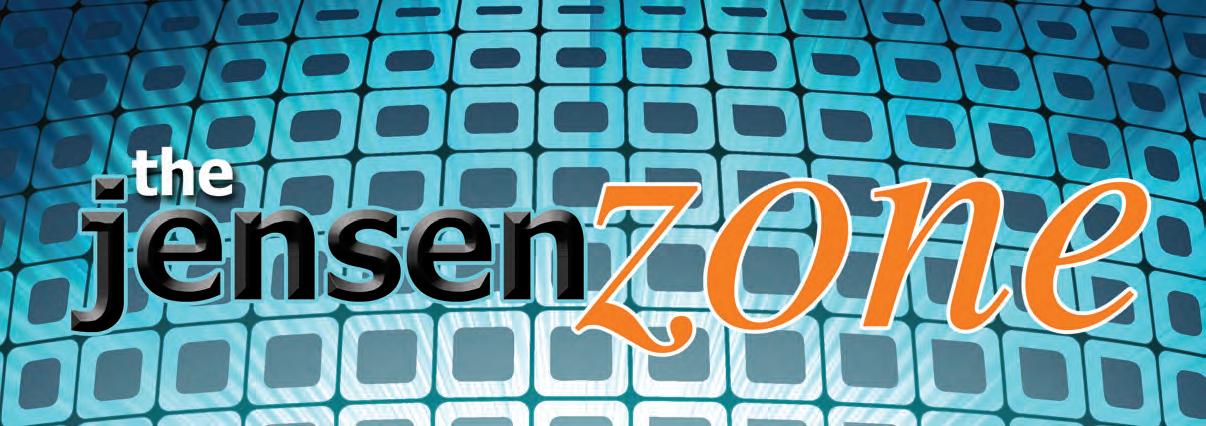
My Advice for USTA League Players
By Luke Jensen
Tennis STARS!
How is your game? Are you ready for league season? Have you been excited about getting back on the court with your team? I absolutely LOVE league season. There are always more challenging opponents, and tons of great experiences to have. Across the nation, it’s the leagues that are the heartbeat of our game. The team captains that deal with all the challenges navigating a season of ups, downs and fielding a lineup are unsung heroes! Being around teams at every level of play I found that when everyone takes personal responsibility for their part of the positive team experience, things are always better no matter what the team’s record is.
Communication is always the first winner you can hit for your team. If you can send the team captain what your life schedule is, it will really help the leader’s plan accordingly. Life gets in the way but as soon as things get organized, they run smoother.
Be clear with the captain and write down details for them such as what court you prefer to return on, the three players on the team you would like to compete with, if possible, or anything you would like to communicate with your captain. For example, if you have no problem playing with a weaker player on the team or the player on the team that no one wants to play with (haha). But I’m serious!
My siblings and I, who all played the Grand Slams in doubles, were always taught to be the team player that will play any role on the team, with any player on the team. This role for the team can be as important as a win. The captain can count on you in tough situations and that alone is a victory!
Remember that things always change, so be very adaptable to new partners and playing a side you’re not as comfortable with. Wear a beautiful smile and have positive energy. Make this the best league season EVER! No matter what your record ends up being. Build great friendships through the sport we love.
Over the last decade, I’ve always shared my journey through the game of tennis, including stories from my playing days, what I’ve learned from my coaching opportunities and even lessons learned being a Director of Racquet Sports at various facilities. The Tennis Gods have always challenged me with wonderful opportunities that move my love for the sport forward. The last two years, I coached Coco Vandeweghe on the WTA Tour, and it’s been fantastic and

so much fun! To be coaching at this level again is the closest thing to actually being on the court, and was exhilarating for sure.
Vandeweghe retired right after last year’s U.S. Open, and I began looking for another coaching opportunity at the professional level. Opportunity arrived in an ATP player named Abraham Asaba of Ghana, who is playing on the Futures circuit around the world
It is so much fun going back to this level of competition. Everyone is so good and so committed to climbing the rankings. The practice courts are packed from morning to night, and if they are not on the court the players are in the gym. If they are not in the gym they are running sprints and stretching in the parking lots of the facility. There’s an incredible energy. Awesome Abraham is playing soon in the Africa Cup which will give him an opportunity to represent Ghana in the Olympic Games in Paris.
I will keep you all up-to-date with Abraham’s progress and continue sharing unique stories from the world of professional tennis.
Born in Grayling, Mich., Luke Jensen’s resume includes 10 ATP Tour doubles titles and singles victories against Andre Agassi, Pete Sampras, Ivan Lendl, John McEnroe, Bjorn Borg, Jimmy Connors, Boris Becker, Stefan Edberg and Jim Courier. Jensen and his brother, Murphy, won the 1993 French Open doubles title. Luke is currently director of tennis at Sea Island Tennis Center in Georgia. He may be reached by phone at (315) 443-3552 or email lukejensen84@yahoo.com.
55 NYTennisMag.com • March/April 2024 • New York Tennis Magazine

Djokovic, Nadal Meet Up On Plane
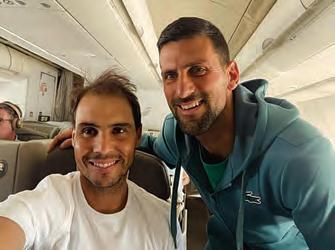
On their way to the United States ahead of the BNP Paribas Open in Indian Wells, Calif., Novak Djokovic and Rafael Nadal found themselves on the same flight. The two legends, who have 46 Grand Slam singles titles between them, posted a selfie together on the plane with the caption, “Great company on the way to USA.”
American Kania Gets Two-Year Suspension
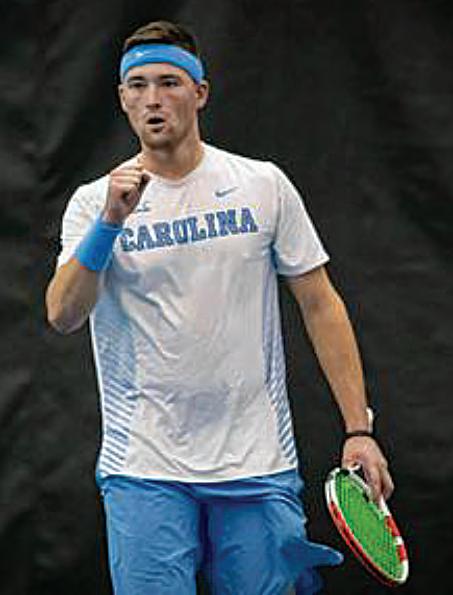
Casey Kania, a former star at the University of North Carolina, currently competes on the ATP Challenger Tour, and was handed a two-year suspension from the International Tennis Integrity Agency (ITIA) for testing positive for marijuana. The positive result came from an incompetition urine test at the ATP Challenger in Cary, North Carolina last August. The twoyear ban was met with a lot of criticism from fellow players and others on social media.
Tennis Magazine’s Gossip Column
By Emilie Katz
Gauff Recognizes on TIME Magazine’s ‘2024 Women of the Year’ List
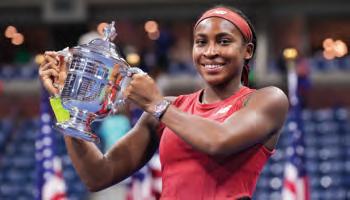
American teenager Coco Gauff was honored by TIME Magazine’s as one of its 2024 Women of the Year, which honors "extraordinary leaders working towards a more equal world."
Gauff is the youngest woman and the only athlete to be named to the list.
Federer Hits the Slopes With Vonn

Roger Federer is making sure to stay active during his retired years as the 20-time major champion joined three-time Olympic medalist Lindsey Vonn. The two have been friends for more than a decade now, and Vonn captioned her Instagram post saying:
“I finally got to ski with my friend Roger… yes, @rogerfederer! Have to take some time to really reflect on what it this means to me… I have admired Roger as an athlete, philanthropist and incredible champion for so many years. Normally, people you look up to always let you down in one way or another, but not Roger.”
6
court
New York
56 New York Tennis Magazine • March/April 2024 • NYTennisMag.com
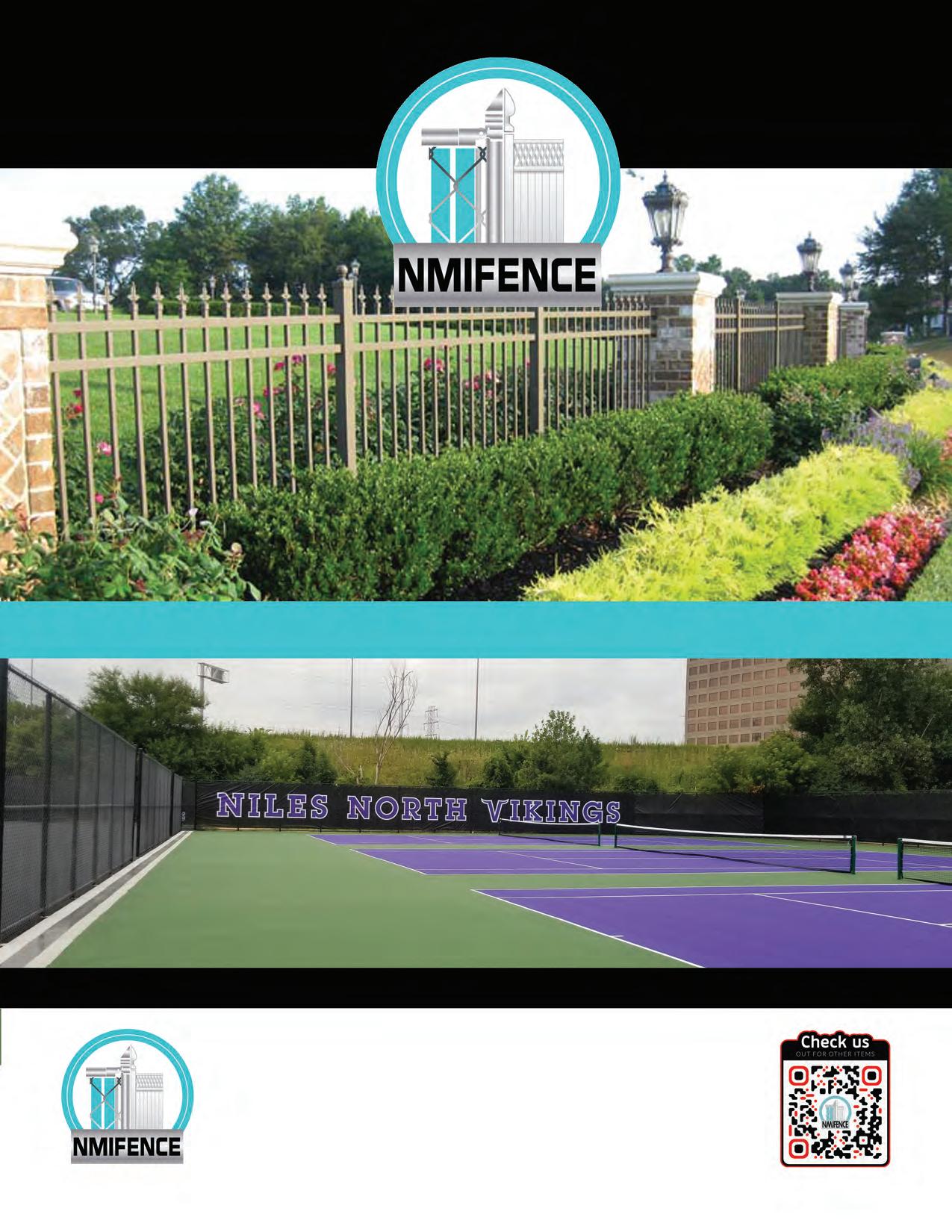














































































































 Luma Teixeira (left) of the Ross School Tennis Center paired with Dhriti Reddy Pylla (right) to capture the title at the L4 Winter Championships in East
Teixeira and
Luma Teixeira (left) of the Ross School Tennis Center paired with Dhriti Reddy Pylla (right) to capture the title at the L4 Winter Championships in East
Teixeira and

















































































































































































